It’s now been a few months since Apple released their second generation watches, both the Apple Watch Series 2 and the Nike+ Edition. These watches built upon the initial Apple Watch first generation units by adding GPS capabilities and improved waterproofing. Further, they made internal updates to a faster GPU (graphics) chip and processor, as well as a brighter display. Beyond that, virtually all other updates have been software driven and are also available on the first generation Apple Watch.
I’ve been using both an Apple Watch Series 2 unit I bought, as well as a Nike+ Edition that Apple sent over as a loaner to test. I’ve done so since earlier last fall, switching back and forth between the units over that time frame. I’ve now got a crapton of miles on both watches, across a wide array of activities: Running, Hiking, Cycling, Openwater Swimming, Pool Swimming, etc… Like always, I’ll send that loaner unit back once this review is done. The one I bought I’ll keep, till death do us part.
This review focuses heavily on the fitness and sports side, like most of the reviews here. There are plenty of other reviews out there talking about generic Apple Watch usage. Though, I do cover some of the Apple Watch non-fitness pieces later on just to provide some context. With that, let’s dive into it!
Making Sense of The Models:
As with the initial Apple Watch, there are numerous models. Last time the differences in those models were largely focused on styling and external materials. Once you look at software, everything was identical. Meaning there was the gold model for those that apparently had too much money, and there was the sport model for the rest of us. Plus 238 different bands to ensure fashionistas were happy. All was simple in some ways.
Moving forward to the Series 2, they’ve reduced the number of models. Apparently, people were smart enough not to buy the gold edition, so that’s gone, and the list has been distilled a bit to a handful of core models. Bands continue to be vibrant, which is good because on a watch your band becomes like a smartphone case – a way to make it unique. There are two sizes – a 38mm and a 42mm, as seen above (left is 38mm, right is 42mm).
Except there’s one specific difference which throws a monkey wrench into everything: The Apple Watch Series 2 Nike+ Edition. That unit booth looks different from the outside, but also notably has different software on the inside. From a hardware standpoint though (excluding the band), it’s identical to other Apple Watch Series 2 units. Here, let me make it super-duper clear:
A) Nike+ Edition has a yellowy-green and black band (other editions have other bands)
B) Nike+ Edition has the *exact same internal watch hardware* as other editions
C) Nike+ Edition has the Nike+ Run Club app pre-loaded on it
D) Nike+ Edition is exactly the same price as the non-Nike+ edition: $369USD
And that’s it. Well, except two very minor software tweaks:
– The Nike+ edition includes two unique Nike+ watch faces you can select
– The Nike+ edition allows you to ask Siri to start a run, which will launch the NRC app on the watch (but only if the phone is next to you)
So basically, you pay exactly the same amount and get a different band and a software app on the watch. An app I’ll dive into more detail on in a few sections from now. Note that you *can* install the NRC app on a non-Apple Watch Nike+ edition just fine. You just won’t get the Nike+ watch faces. Insert sad panda face here.
Finally, what’s this about the Series 1 watches? And how do those differ? Well, Apple has taken the existing non-GPS enabled original Apple Watch units and rebranded them ‘Series 1’. With that rebranding though they did get a very minor hardware update, specifically they received two changes:
– Dual core processor added (Series 1 add)
– Display brightness increased (Series 1 add)
The above two changes were also rolled into the Series 2 watches, which additionally received two further changes:
– GPS was added (Series 2 add)
– Full waterproofing (Series 2 add)
Here’s a quick recap of how they differ:
Apple Watch (Original): Released in April 2015 (shipping date), no GPS/no waterproofing
Apple Watch Series 1: Released in Sept 2016, no GPS/no waterproofing, brighter display, doubled processor
Apple Watch Series 2: Released in Sept 2016, has GPS and waterproofing, brighter display, doubled processor
Nike+ Edition: Released in Sept 2016, has GPS and waterproofing, brighter display, doubled processor
Got all that? Good.
As for this review, it’s been completed on both an Apple Watch Series 2 and an Apple Watch Series 2 Nike+ Edition. With that, let’s get into the unboxing.
Unboxing:
Like the previous generation Apple Watch, the Apple Watch Series 2 comes in a long box, one that feels absurdly heavy for what you expect is inside it.
If we crack open the box you’ll find the watch lying there looking up at you. I’ll then separate out the multiple layers of the box, which allows you to find the charging cable and manuals.
If we lay everything out, you’ll find the three components: The watch, the extra watch strap length, and the charging cable.
To take a quick look at things, first up is the charging cable. It’s identical to the original Apple Watch charging cable. It uses a small magnet on one side that attaches to the back of the watch. The wall adapter will vary based on where you purchased it. For example, in this generic Apple Watch one I purchased in France (in Paris at the Apple Store under the Louvre!), so it came with a European adapter. Whereas one purchased in the US will come with a US adapter. It doesn’t much matter, you can use any standard USB port on earth to charge it. Except a new MacBook.
Next we’ve got the additional watch strap, which is inside the box. This one is longer than the one on the watch by default.
And finally, a closer look at the watch from all sides. A mini-gallery of sorts.
Once that’s done, we’ll want to get it paired up to the phone. This is probably the coolest aspect of things, since it uses this crazy little QR code embedded into the moving image shown on the watch.
It only takes a second, and then you’re ready to roll!
Daily Activity Tracking:
While most activity trackers focus on meeting a daily step goal, the Apple Watch takes a slightly different tack. Instead, the platform focuses on ‘filling’ three different circles each day. These circles are visible through the activity tracking app on the watch, or just by using a dedicated watch face that you can set.
These three circles are color coded, and will complete their entire rotation (hopefully) each day:
Move: Red
Exercise: Yellow/Greenish color
Standing: Blue
The first one, Move, is akin to steps and movement (though measured and goaled in calories). While the second one, Exercise, is for cases where the Apple Watch believes you’re doing some form of workout. Even if that workout is a brisk walk. It doesn’t have to be an official workout started without the workouts app. I find that even a quick walk to the subway station will trigger it into me earning exercise.
Lastly, we’ve got the Standing metric. This aims to get you standing at least once each hour. The hope there is that by getting you to stand that you’ll in turn go off and run a marathon. Or something like that. And to be fair, it does work. In general since it’s trying to get me to stand, I’ll usually go and wander somewhere – even if only for 30-45 seconds. But sometimes I’ll get further distracted and walk even more – thus Apple achieving its goal of getting you to stop working at your desk or sitting on the couch.
It’ll remind you each hour at 10 minutes to the hour (i.e. 10:50AM, 11:50AM, and so on), to stand – if you haven’t already done so that hour.
Throughout the day you’ll also get occasional fitness status updates on your day – summarizing your activity awesomeness (or enshrining your laziness). You can also dive into the Activity app on your watch and see the same information at any time.
All of this data is rolled into the Apple Watch ‘Activity’ app on your phone. This app details each day and allows you to look at each of the different components:
Further, you can then look back at months worth of data as well as earn small achievement medals for hitting various goals:
It’s worthwhile noting that Apple is actually feeding data into two different apps. First is the Activity app that I talked about above. But technically behind the scenes they’re also sending data to the Health app (in fact, it’s likely that the Activity app actually pulls from the Health app). That Health app is more commonly known as Apple Health, famed for its “Health Kit” interface for developers.
You can see virtually all the same data in Apple Health, it’s just in a less pretty manner:
So what are the differences? Here’s a more clear explanation I put together a while back:
Activity App: This is basically the Apple equivalent of what you’d see with the Fitbit App, Garmin App, or Polar apps. It shows your day to day progress around activity tracking (steps/etc…) and workouts. However, think of it like a super-simplified version. For example, if I complete a run with GPS tracking, I’ll see my track on Apple Maps (but no satellite views). I can connect to friends here, allowing me to challenge them or mock them. However, the overall app is fairly simplistic and there isn’t anything when it comes to getting data to other apps or platforms.
Health App: This is also often interchangeably called Health Kit by folks, though there is a small technical difference. Health Kit is the set of services & API’s that apps can use, whereas Apple Health is the app that you as a consumer use. Nonetheless, this is basically a massive database for all sorts of health and wellness information. While it does feature some basic dashboards, the average person probably isn’t going to set these up beyond the defaults. The potential here is vast though, and this is where 3rd parties can add data. So for example, Garmin pumps some data into this, as does Withings. Fitbit does not however, due to their general pissing match with Apple.
If we look more deeply into the Health App, you’ll see it supports many more data types than the Apple Watch can or ever could measure. For example: weight scale data. Some other metrics are things that we’ll likely see Apple add over time of course with new hardware.
Now, it’s really important to understand one key thing about Apple Health: It lives on your phone. End of story. There is no Apple Health ‘Cloud’, or online platform (such as with Google Fit, Garmin Connect, Fitbit, Withings, and everyone else in the world). The idea behind this is to increase security of your personal health (and potentially medical) data. But there are pros and cons to everything. By doing so it requires that when 3rd parties want to add data, they must do so through an app on your phone. So for example, lets say you had the Withings WiFi Scale. That can’t directly talk to Apple Health. Instead, you have to stand on the scale, let it do its WiFi sync thing, and then open up the Withings App on your phone. Then from there the Withings App will sync to Apple Health using Health Kit API’s.
It’s worth noting that unlike every other mainstream fitness tracker company – there is no desktop app for the Apple Watch sport/fitness activities. There’s no website you can check. That’s because everything sits on your phone. So there’s no way a 3rd party website can reach into your phone unless you sync that data via a 3rd party app installed on your phone. In any case, there’s no equivalent to Garmin Connect website, or the Polar Flow website, or the Fitbit website.
Lastly, it’s important to mention that the Apple Watch does not track sleep in any way, shape, or form. At least not natively. This is likely because the limited battery life means that Apple is basically edging you towards charging at night, versus wearing it to track sleep. Of course, virtually every other wearable on the market – even the $29 Misfit tracker – has sleep tracking.
Still, if you want your sleep fix, there are some solutions from 3rd party apps. One that I’ve tried previously, and again here, is the 3rd party app called ‘HeartWatch’. This app allows you to start a sleep session from your Apple Watch, which will then record sleep metrics from the watch overnight. Below you can see the details from a few nights ago:
And the app actually does far cooler resting heart rate analysis than Apple does. Mostly because Apple does none (except storing the data, which HeartWatch leverages).
Finally, as you probably noticed in the screenshots above, the app apparently has a new ‘AutoSleep’ option that you can download/buy that will automatically capture sleep data as opposed to manually starting it. Though, I haven’t tried that yet.
General Workout/Sport Use:
The Apple Watch includes a workout app that allows you to track workouts. The Nike+ edition also includes a separate running-focused app – Nike+ Run Club – as well. I cover that app in the next section. For this section though it’s all about the default app, which is an important way of noting that with a device like the Apple Watch, 3rd party apps will fill in many of the gaps that the default app has.
Of course – one of the most notable improvements to the Apple Watch Series 2 lineup was the inclusion of GPS. Previously the watch would depend on you having your phone with you. Whereas now it can go untethered. Still, the starting procedure is identical. To begin a workout you’ll tap the Workout icon on the home screen, which will bring you to the photo above.
At this point you can select any of the workout types. Your most recently used sports will bubble to the top and offer a quick start mode, which begins the count-down immediately. Else, for other sports, you can select the sport name and configure settings.
These settings include goals – distance, time, or calories.
Note that overall settings are pretty limited here. You can change a handful of data page options within the Apple Watch App on your phone, but only those seen below:
With that set, you can go ahead and begin your workout. We’ll use a run for this basic example – all workouts offer effectively the same page and structure. Said differently: Once you’ve seen one, you’ve seen them all, aside from configuring which data fields you want on your workout page. It’s here that 3rd party apps can greatly expand your choice.
The data will update automatically. To give a look at pacing stability, here’s the current pace as shown on the screen while running. Note that many companies these days will utilize the accelerometer to provide more stability than GPS data alone. So by holding up the watch to take video of it, I am slightly impacting that. Still, I found that the pacing stability levels shown in the video I made below is virtually identical to that of what I’d experience when not holding a camera above it. It doesn’t matter. It sucks either way.

As you can see – it’s dismal. Like, horribly bad. I think the video basically says all I can possibly say about it.
Upon completing your workout, you’ll get a summary page that shows you overall metrics from the run.
Further, if you dive into the ‘Workouts’ app on your phone, you’ll get additional workout-specific data, including a basic map of where you ran. Note that unlike every other GPS fitness tracker on the planet, you *cannot* export out your GPS track to 3rd party apps. Even apps like Strava can’t receive workout data from the native Apple Workouts app. Strava can however use its own app to record data. So keep that in mind when starting your workout, as to which app/platform you want. The three screenshots below capture 100% of what you can display within the Workouts portion of the Apple Watch app. There’s no other data pages to show.
Now of course, like most products these days, the Apple Watch does have an optical HR sensor in it (the exact same sensor as the original Apple Watch). Optical HR sensors are becoming commodity in the activity tracker and fitness realm. What isn’t commodity however is the quality of the sensor, which varies heavily from company to company. But more on that in a moment.
The way optical HR sensors work is that they shine an LED light down through your skin to your blood capillaries. From there, the optical sensors (photodiodes) then pickup that light and measure the blood flow, and thus your heart rate. Apple employs two green LED’s, and two photodiodes on the back. The technology has been around for many years in a number of different forms. But it’s really only been the last 3-4 years that we’ve seen it migrate into the sport world (well before Apple got there).
However, the Apple Watch also has a secondary method for capturing HR, which is using infrared. It does this when it’s capturing your 24×7 HR, whereas the green LED’s are used for sport activity. In the 24×7 mode, Apple Watch measures your heart rate at random intervals – seemingly based on movement. It could be 15 seconds apart, or 10 minutes apart. All of these data points can be seen in the Apple Health app, deep in the menus under sources.
Meanwhile, in workout mode, it’ll leverage the green LED’s to provide continuous HR throughout the workout. Like all optical HR sensor units on the market, you need to take some care when it comes to positioning on the wrist. For example, the further away from the wrist bone the better. Being right on the wrist bone just won’t work well, no matter the brand. Below is an example of good placement and snugness. Note my wristbone about 2-3cm to the right of the watch (you can click to expand).
You can also pair a heart rate strap directly to the Apple Watch to provide more accurate data. I talk about the optical HR sensor’s accuracy a few sections down from here.
Now one final quirk that’s worth mentioning. In mMy testing I found a bizarre oddity that can prevent the Apple Watch Series 2’s GPS from functioning at all. In my case, I was using a Garmin Edge device with Live Track enabled while out riding. Yet, if I use that device with Live Track enabled, it somehow blocks the Apple Watch Series 2 GPS from functioning (it’ll give zero distance and speed readouts). Bizarre, given the whole point is to have a GPS chipset within the watch – which should have no dependence on the phone. It’s hard to know ‘who’ to blame here. Apple’s mum on the issue, only to confirm that they can confirm it. Obviously it’s an edge case, but it shows what might be an odd dependency/bug within Apple’s logic that any 3rd party app can apparently break GPS on the watch itself. Note that I can reproduce this issue at will, and other readers have confirmed it.
Nike+ Run Club:
Unique to the Nike+ Edition (but still available to install on other Apple Watch units) is the Nike+ Run Club app. This app comprises two pieces. First is the Nike+ Run Club (aka NRC) app that runs on the watch itself. And second is the NRC app that runs on your phone. And not to be forgotten, there’s technically a third component to this – the Nike+ Training Center app that can also be installed your favorite fruity phone device. Though, that’s not required.
(Nike Run Club app left, Nike Training Center app right)
The NRC app on your watch is designed to be that slightly nagging coach that’s tapping on your shoulder each day asking if you plan to get in your workout.
Once launched, the app has a few basic pages to begin with. First is the main page which lets you start a run. We’ll come back to that in a second.
Then if we swipe right we can schedule a run, which shows the weather for the remainder of the day.
And finally, we see a summary of the mileage we’ve put into the NRC app thus far this month in runs. Note – it’s only this app, and not other apps. So if you use the baseline Workouts App (as I often do instead), that doesn’t count. In any case, back to the start button. It’s here you can swipe down to get to different types of runs, based on distance, duration, or speed.
Also, you can configure some super basic settings – including whether you’re inside (i.e. a treadmill), or if you want auto-pause enabled, voiceover enabled (speaks metrics), or if you want additional metrics shown during the run (All Metrics). Finally, you can set a playlist for music.
Back up top, we can hit the start button to start the run, or the ‘Match It’ button, which gives you the goal of your last run’s distance. You can tweak that distance as you see fit by adding or removing. So the slogan should really be: ‘Match it, unless you’re lazy.’ Finally, after whacking the start button, you’ll get a 3-second countdown.
At which point it’ll show your total distance, current pace, and current time. Your heart rate and the time of day are displayed along the upper edge. Along the bottom, it’ll show progress towards a goal, like the installation bar on an app.
And that’s it when it comes to metrics. Nothing more, nothing less. Well, actually, if you deselect ‘All Metrics’, then you will get less.
Lastly, once done with your run (and really, it’s only runs, not other sports), you’ll get a summary screen of the workout, including even a nifty breadcrumb style map.
These workouts can then be opened up using the NRC app on your phone to dig into more detail. Like much of the Apple Watch workout experience, the app is somewhat basic when it comes to the data displayed. For example, you can’t change to satellite or terrain view in the maps.
Though, you can share out your run as a picture, using a photo you took along with the route/metrics overlaid onto it:
It’s funny and somewhat astounding to me that Nike has had this forever, and yet majors like Garmin, Suunto, and others lack it. I have a number of friends on my Facebook/Instagram feeds that share these out – complete with the Nike logo each time. It’s perfect advertising for the platform.
Lastly, while there are other sections of the NRC app – such as the leaderboard and events pages, the timeline page instead seems to be filled with ads for Nike branded gear.
There ya have it – the Nike+ specific features. Note that the only unique features of the Nike+ edition of the Apple Watch compared to the regular Apple Watch Series 2 units, is the dedicated watch-face (below), and then the ability to tell Siri you’re going for a run and have it launch the Nike Run Club app.
Thus ultimately, I’d let your style/fashion choices drive which Apple Watch unit you want – more than a specific Nike branding or not. If you like the Nike+ straps – then go forth (you can always swap straps later).
Swimming:
One of the biggest changes (aside from GPS) implemented in the Series 2 was enablement of swimming functionality. While the previous edition was largely waterproofed just fine (as I showed in my videos), Apple played it safe and declared it not waterproof. In fact, they even went as far as blocking swimming apps from the App Store, in fear that folks might use their non-aquatic first generation watches in the pool.
But Series 2 dispenses away with all of that. Not only is the unit fully waterproofed to 50m, but it’s also got tracking modes for both indoor and outdoor swimming. Further, the unit actually has a water ejection mechanism, which spits out water like a drowning cat. Albeit, a cat with a backup alarm sound to it.
The way it works is by using the speaker to vibrate the water out. Apple showed some pretty cool pics during their opening announcement presentation on how it works mechanically:
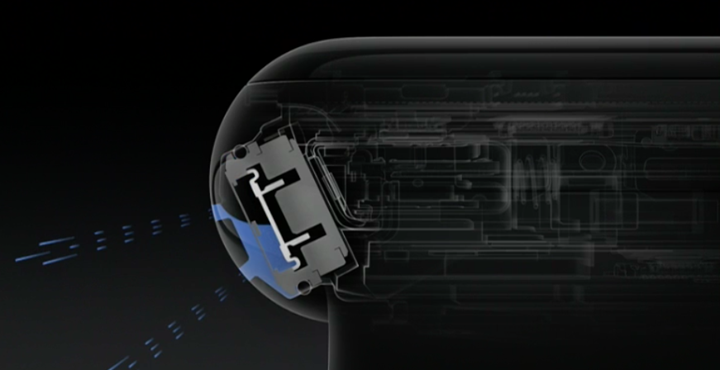
So with that in mind, we’ll start with an openwater swim or two. Like other sports, you’ll select the ‘Open Water Swim’ option from the sport menu list in the ‘Workout’ app.
From there you can specify a goal, such as elapsed time, calories, or distance (yards/meters). Or simply leave it open to specify no goal.
Next, you’ll get your count-down as usual, and it’s off to the races…or water. What’s notable here though is that the screen is now locked by default. Because the Apple Watch has a touch screen which won’t work underwater, it doesn’t want it to be going all crazy on you, so it locks the screen:
So you’ll only get one data screen to work with, which shows time, calories, distance, and swim pace.
In order to access the other screens you’ll need to turn the digital crown to unlock the unit. At which point it’ll do its water spitting routine shown above.
When unlocked the unit is still tracking/recording, until you slide over to the control page to pause/end/lock your workout. After you’ve completed the swim you’ll get a summary screen showing total distance, total time, dominant stroke, active calories, total calories, average pace, average heart rate, and the weather.
Meanwhile, let’s head over to the Apple Watch Workouts app on the phone to look at nearly the same information, yet this time with a map:
Now what’s missing here is any satellite view. This is a huge bummer since for many people the satellite view is more useful for openwater swims because it provides more context around terrain. Oftentimes generic map displays are inaccurate when it comes to coastlines. Or, they’re useless. For example – this swim I did on the Great Barrier Reef. Here’s what Apple displays:
And here’s the increda-bam that I actually swam using satellite imagery from Google:
Every other GPS watch allows you to overlay data onto satellite view, except Apple. What’s that you say? Why not just export it as a GPX file?
Ahh…that’s right. You can’t.
For real.
You can’t export out any GPS tracks from any of Apple Watch’s native apps. So no uploading this to Google Maps, or Strava, or Training Peaks, or MapMyFitness, or anything. It’s just a fart in the blue wind.
What about swim distance accuracy though? Well, it’s a bit hard to compare exact tracks because I can’t actually export these out. So instead, I’ll have to go by total distance. So in this case, here are a handful of swims compared to other GPS watches worn at the same time. In this case, I included a ‘reference GPS’, which is a GPS that floated on a swim buoy about one foot behind my butt. It’s a great way to test swimming GPS.
Openwater Swim – Jan 24th:
Apple Watch Series 2: 1,028m
Reference Swim Buoy: 1,046m
Now, to Apple’s credit, their GPS track accuracy is among the best I’ve seen when it comes to openwater swims (other sports, less so). I mean, in my swim cases, they truly nailed exactly where I went – even if it’s difficult for me to demonstrate that because I can’t overlay tracks in any scientific manner (again, because I can’t export).
Shifting gears – what about indoor swimming? Well, it pretty much works very similar to outdoor swimming, except without the GPS. For indoor use it’ll use the internal accelerometer. To begin, you’ll start by selecting ‘Pool Swim’ in the Workouts menu.
Next, you’ll need to select your pool length. You’ll do this by pressing up/down on the +/- arrows. The minimum pool size is somehow 1 yard, and the maximum pool length is somewhere north of 1,054 yards. I got tired of holding the button down. What’s odd though is that you can’t simply select presets like 25y or 25m, or 50m. In fact, even odder because in reality many people in the US for example will rotate between a 25y and a 50m pool. You can toggle between yards and meters by holding down the center of the screen for a second.
Still though, you can’t select some common pool sizes. For example, I happen to have an odd-duck 33 1/3rd meter pool. Which…I can’t select (though virtually every other swim watch on the market has this size supported).
In any case, that annoyance aside – you’ll tap next and be given the usual goal selection: Calories, Time, Distance, Open. In my case, I just went with Open.
From there the unit will lock the display just as with the openwater swim, and it’ll start tracking your swim. It’ll show you: Time, Active Calories, Laps, and Yards (Total). And just like before there are no further screens to change to, except to unlock the screen using the digital crown and then pause/end the swim.
Once that’s done you’ll get the same summary metrics as above, as well as the summary metrics offered in the Apple Workout app:
From an accuracy standpoint, I didn’t see any issues with accuracy during indoor swims, which matched that of both my actual distance/laps swam, as well as that of other watches I was using.
Optical HR & GPS Accuracy:
So what about both optical HR and GPS accuracy? Since I’ve covered swim accuracy already, so I’m not going to re-hash that. I’ll put swimming that in the camp of ‘Good’.
But what about that optical heart rate sensor? Well, nothing has changed there since the first version of the Apple Watch. Apple themselves has noted it’s identical hardware to the original watch. Of course, over time Apple has made improvements in software for both editions – so you will naturally see some tweaks between the two.
Of course there’s certainly been lots of commotion in the mainstream media about how well the Apple Watch works on various skin tones and things like tattoos or hairier arms. The reality is that this is no different than other optical HR sensors. Some companies will add in secondary LED colors to add more breadth to their optical HR measurements. Yet others with just green-alone are able to do just as good. But ultimately, the non-click-bait headline is actually that Apple isn’t really any different than anyone else. For some people it’s just not going to work – no matter if their skin is white or black, or tattooed or not. There are plenty of reports of perfectly functioning Apple Watches with optical HR across a wide variety of skin tones (just as there are on other sensor companies).
What is FAR more important than skin tone, is really just how you wear it: Snug, and away from the wrist bone. If you do that, you’re rather likely to at least have a starting point for good results.
With that in mind – how does it handle? Let’s start off with a simple run to check things out. In this case, a run I did a nice 5-7 minute easy warm-up, before getting into the groove for about 3K at a relatively even pace. From there I then kicked it up a notch or two for another 3K, doing a loop around a park.
What’s notable to start with is that it took almost 2 minutes after pressing the start button for the Apple Watch to decide on a heart rate. At which point that heart rate was incorrect by 40 beats. It wasn’t until 7 minutes into the run that it agreed with everyone else.
Once that 7-minute marker hit, it was generally pretty good across the remainder of the run, minus a small blip at the 12-minute marker. But still, what you see early on in the run is quite normal for the Apple Watch.
Apple seems to be hesitant to simply tell users to wait until they have a HR lock – so they pretend like all is well, when in reality it doesn’t have a lock at all. The cascading effect of this is that it takes far longer to establish a lock while running. Had the Apple Watch simply told you to wait another short bit – even 10 seconds – it’d have a drastically different result. Clearly a case of software form over function. Note that every other watch on the market tells you to wait a few extra seconds while it finds a lock. Every one.
Next, let’s look at an outdoor ride. This was about 3 hours long, and over varied terrain. Intensity level was generally easy towards the beginning, a few solid hills in the middle, and then a bit harder intensity towards the end.
The above is smoothed at 20-seconds, meaning that in order to see gaps more easily in such a large plot of data, the smoothing helps. It’s clear that by and large it does pretty good matching the HR strap. You can see that it completely misses the start of that section in the middle where the HR spikes up (due to the hills). It also misses some earlier intensity shifts (briefly). It catches up, but let me show you how long that takes if I remove the smoothing in the graph above, and focus just on that hill section:
What you see here is that the Apple Watch basically gives up. It takes about 4 minutes after my first increase in intensity until it gets anywhere near, at which point it immediately loses the plot again for another 2-3 minutes. After which, it seems like it’s good to go again.
But what you see above is common – when it loses the plot, it just gives up entirely for many minutes at a time. On the flipside, when something like a Garmin or Fitbit’s optical HR sensor loses the plot, it kinda keeps on trying (albeit, for better or worse). Generally though, with Fitbit or Garmin, their optical sensors will re-lock faster.
And finally, let’s look at another run – this one a much tougher trail run. This is tough and notable for a few reasons. First is that with the quick increase in incline, my heart rate increases rapidly. This can often be trickier for optical HR sensors. Second though is that with trail running my cadence is going to vary more with the terrain. Steeper terrain causes slow-downs, while descending speeds it up. When optical HR sensors fail to track, they often do so by matching your run cadence. So here’s how that performed:
In this case, you see that overall it actually did pretty darn well (above smoothed 10 seconds). All of them tracked rather nicely for the most part. You see three blips where things dropped out of nowhere on the Apple Watch unit, for no particular reason. It wasn’t at a tough part or an easy part, it was just…out of nowhere. It took about 60 seconds for it to re-find itself in that first blip – as you can see below.
Now you may be wondering about GPS accuracy. And that’s where things get a bit trickier. See, the Apple Watch platform (either the Activity App or the Apple Health app) doesn’t allow export of GPS data. The only export you can do is of a small picture of your run:
That’s it.
As such, I can’t export out the GPS data and overlay it against other GPS devices at the same time. This is of course pretty disappointing. At best I can compare total distance, but that’s easily skewed. A device could cut one corner while going wide on another – resulting in the same end-distance, but being otherwise incorrect. That said, here’s what I’ve got for a handful of runs and rides I’ve picked out at random:
Outdoor Run – Jan 20th:
Apple Watch: 7.08mi
Garmin Fenix Series: 7.09mi
Garmin Fenix3: 7.41mi
Hike – Jan 23rd:
Apple Watch: 4.17mi
Garmin Fenix Series: 4.06mi
Garmin Fenix 3: 4.06mi
Outdoor Run – Jan 24th:
Apple Watch: 5.04mi
Garmin Fenix Series: 4.97mi
Suunto Spartan Ultra: 5.05mi
Outdoor Run – Melbourne – Jan 30th:
Apple Watch: 6.73mi
Garmin Fenix Series: 6.82mi
Suunto Spartan Ultra: 6.91mi
Outdoor Run – Melbourne – Jan 31st:
Apple Watch: 3.25mi
Garmin Fenix3: 3.29mi
Suunto Spartan Ultra: 3.22mi
Treadmill (indoor) – Feb 7th:
Apple Watch: 4.83mi
Garmin Fenix Series: 5.00mi
Actual Treadmill: 5.07mi
In general, I find that it seems to short the actual distance of the run in almost every scenario (these are all GPS-on runs). And even on treadmill runs, it’s also a few percent shorter than I’d expect otherwise. Of course, treadmill runs are tough, but still, it’s short more than other devices I’ve tested.
Now in the sport device world – being short is far better than being long. Measuring long is the cardinal sin, because it means you’ve likely run both slower and less than you thought you did. Both of which give you a skewed assumption of your actual fitness. In this case with the watch often measuring short, you’ve likely run both faster and longer than you actually did.
Which isn’t to say that’s good. It’s not. But it’s the lesser of two evils.
Ultimately, neither the Apple Watch’s GPS or optical HR performance is anything to write home about. It’s below average at best. Not horrible for optical. But not great either.
(Note: All of the charts in these accuracy sections were created using the DCR Analyzer tool. It allows you to compare power meters/trainers, heart rate, cadence, speed/pace, GPS tracks and plenty more. You can use it as well, more details here.)
Fitness Apps (3rd Party):
Now the good news is that where Apple’s own apps lack functionality, 3rd party apps will be able to fill those gaps. For example, apps like RunMeter (or CycleMeter) – ones like HeartWatch (as I talked about earlier), Swim.com, and even mainstays like MapMyFitness are all solid options that give you far more flexibility than the default apps provide.
Then we’ve got long-awaited apps like Strava for the Apple Watch Series 2, that’ll be able to take advantage of the standalone GPS. Strava says that you’ll start seeing that available in just a few weeks.
Of course – one of the challenges these apps have though is that they still depend on the underlying data from Apple to be correct. That means that it’s garbage-in, garbage-out when it comes to stuff like heart rate or GPS. Certainly apps can try and smooth some of that data themselves, but if they’re left with sub-par data, there’s little they can do to make the situation better – at least from an accuracy standpoint.
Also – many apps are still very much dependent on your phone, negating the benefit of the Series 2 devices. Of course, a lot of apps have updated to become phone independent, but it’s still a mixed bag. Heck, even Apple’s own Nike Run Club app bundled with the Apple Watch Series 2 Nike+ Edition requires the phone to use the ‘Speed’ workout option, asking you to crack open the app on the phone.
Some apps split the difference on utility. For example, the GoPro app (for use with their action cams), allows some basic control of the GoPro. You can change modes between video and photo for example. But they miss the mark on allowing me to actually change settings (i.e. from 4K to 1080P, or from 30FPS to 120FPS). Though you can mark highlights, which is handy.
But the app has to be in range of your phone, because all communication routes through the phone. Further, the app allows you to preview what the camera sees. Unfortunately the delay is so significant and the update rate so low – that it’s truly only to be used for framing a shot (which, the top of the Apple Watch does somewhat make clear). In this case we’re not talking frames per second (FPS) but rather seconds per frame (about 2-3 seconds between each update).
Which isn’t to say I don’t appreciate GoPro’s attempt here. I just wish it could be more. For example, I’d much prefer to be able to connect the Apple Watch straight to the GoPro instead – cutting out the middleman and giving me a bit more flexibility.
Of course – the main focus of my review is the built-in features of the Apple Watch. I’ll be circling back later this spring to talk in more detail about my top fitness apps and seeing whether they can be true replacements for the advanced athlete.
Non-Fitness Usage:
Of course, while much of the press around the Apple Watch Series 2 is about the GPS and waterproofing, the reality is that a big behind the scenes update was the processing power. That processing power is largely about making 3rd party apps run seamlessly – and making the watch act more fluidly. And the primary audience there tends to be folks who are using the watch as a smartwatch, more than a fitness watch.
And that’s really where the Apple Watch is best – as a day to day smart watch. As I said in my original Apple Watch review – there’s no smartwatch out there that’s as good as the Apple Watch. Period.
There’s no watch out there that has either the app selection or the nuances of the Apple Watch. And most of it’s silly stuff. It’s things like the vibration alerts (or ‘haptic feedback’ in fancy Apple language) are so nuanced that they don’t feel overpowering like most smart watches. Or it’s that when you receive text messages during a meeting while your hands are on the table, it won’t display those notifications on the watch until you finally twist your wrist towards you.
It’s smart enough to not show that incoming sext to all your coworkers at the table, but rather wait until only you want to look at it. At which point you can respond with various pre-canned responses (some of them seemingly smart), a bit of functionality lacking on almost all fitness smart watches. Not to mention that conversations are far cleaner on the Apple Watch than they are on other watches. They’re neatly organized by contact, rather than a flood of random notifications.
It’s funny, I talked with a few different senior people at five-letter fitness giant over the past few months about the Apple Watch, and it’s clear nobody has tried it for more than a few minutes. They lack a basic understanding of why these nuances have made people love the Apple Watch. Seriously, someone needs to force a whole bunch of employees to wear an Apple Watch for a week and understand the attention to detail beyond fitness. Which isn’t to say Apple is good at everything – hardly (as noted above, fitness leaves a lot to be desired).
Shifting to 3rd party apps – when I first reviewed the original Apple Watch, the main concern I had was that most apps were little more than notification pushing things. They didn’t really do anything more than the standard notification center would. And in many ways, that’s still mostly true for non-fitness apps.
Still, there are specific examples where a given app is driving more functionality than before. For example, the GoPro app I talked about before. Or the Drip (for Dropcam) app allowing me to check in on the baby’s room.
Yet there are examples of utter failures of apps. For example, the official Nest app has a single function: Toggling whether you’re home or not. That’s it (Update: It can also set the temperature, but I have Nest Cams, not the Nest Thermostat). Why bother with such limited app? Well there’s a reason: Apple applies incredible pressure to app developers to submit Apple Watch apps in conjunction with their iOS app. If they don’t, then they’ll generally not be considered for including on the ‘Featured’ app pages of the Apple App store.
So while you’ll get many apps that have Apple Watch apps – a large chunk of them suck. I suppose that’s like the old saying “Tis better to have sucky apps, than never to have sucked at all?”. Or something like that.
But all watch platforms suffer from sucky apps. Garmin and Android Wear (and up till recently, Pebble too) certainly have their share of sucky apps.
And thankfully in this case, the watch itself as a day to day business watch stands on it’s own without need for many apps. In fact, the vast majority of the time I don’t use any apps. It’s the entire smart notifications piece on the Apple Watch that sells me on it. Nuance matters.
Product Comparison Tool:
I’ve added the Apple Watch Series 2/Nike+ Edition into the product comparison tool. Note that the Apple Watch is a bit unique (kinda like an Android Wear device) in that there’s a base level of sports/fitness functionality that’s usually somewhat primitive compared to companies like Suunto/Garmin/Polar. However, through 3rd party apps you can extend that functionality quite significantly.
I’ve always struggled a bit here on where to draw the line. Do I say ‘No’ for intervals, since it doesn’t have that functionality? Or do I say ‘Yes’, because you can get it through 3rd party apps. And what if you can through 3rd party apps but only with payment? And for some more nuanced features (i.e. tides or parachute modes), do I try and track down every single app – and what happens if those apps go out of business? It’s not really sustainable to try and track every possible feature and find a 3rd party app to fill those gaps. Ultimately they are just that: Gaps.
So by and large I stick ‘No’ in those boxes – because the watch doesn’t have it out of the box. In the same way that I stick ‘No’ in boxes for Garmin devices if a feature isn’t inbox, but may be available through 3rd party apps. Make sense? Good.
Note that you can make your own comparison table from any devices I’ve reviewed, here in the product comparison tool. In this case, I just picked three other products that are often compared. The Android Wear based Polar M600 (has music), the TomTom Spark 3 (has music), and the Garmin Vivoactive HR (doesn’t have music). From a functionality standpoint, these three are closest.
| Function/Feature | Apple Watch Series 2 & Nike+ Edition | Garmin Vivoactive HR | Polar M600 | TomTom Spark 3/Runner 3 |
|---|---|---|---|---|
| Copyright DC Rainmaker - Updated November 24th, 2020 @ 3:33 pm New Window | ||||
| Price | $369 | $249 | $329 | $149-$299 (Features Vary) |
| Product Announcement Date | Sept 7th, 2016 | Feb 19th, 2016 | Aug 3rd, 2016 | Sept 1st, 2016 |
| Actual Availability/Shipping Date | Sept 16th, 2016 | Q2 2016 | Sept 2016 | Sept 8th, 2016 |
| GPS Recording Functionality | Yes | Yes | Yes | Yes |
| Data Transfer | Bluetooth Smart | USB, BLUETOOTH SMART | USB/Bluetooth Smart/WiFi | USB/Bluetooth Smart |
| Waterproofing | 50m | 50 meters | IPX8 (good for swimming) | 50m |
| Battery Life (GPS) | 5hrs GPS on time (24-48hrs standby) | 13 hours GPS on | 10 hours | Up to 11 hours (varies) |
| Recording Interval | Varies | Smart Recording | 1-second | 1s |
| Alerts | Vibration/Audio/Visual | Vibrate/Visual | Visual/Vibration | VIBRATE/SOUND/VISUAL |
| Backlight Greatness | Great | Good | Great | Great |
| Ability to download custom apps to unit/device | Yes | Yes | Yes (Android Wear) | No |
| Acts as daily activity monitor (steps, etc...) | Yes | Yes | Yes | Yes | Music | Apple Watch Series 2 & Nike+ Edition | Garmin Vivoactive HR | Polar M600 | TomTom Spark 3/Runner 3 |
| Can control phone music | Yes | Yes | Yes | No |
| Has music storage and playback | Yes | No | Yes | Yes | Connectivity | Apple Watch Series 2 & Nike+ Edition | Garmin Vivoactive HR | Polar M600 | TomTom Spark 3/Runner 3 |
| Bluetooth Smart to Phone Uploading | Yes | Yes | Yes | Yes |
| Phone Notifications to unit (i.e. texts/calls/etc...) | Yes | Yes | Yes | Yes |
| Live Tracking (streaming location to website) | No | Yes | With some apps | No |
| Group tracking | No | No | No | No |
| Emergency/SOS Message Notification (from watch to contacts) | No | No | No | No |
| Built-in cellular chip (no phone required) | No | No | No | No | Cycling | Apple Watch Series 2 & Nike+ Edition | Garmin Vivoactive HR | Polar M600 | TomTom Spark 3/Runner 3 |
| Designed for cycling | Sorta | Yes | Yes | Yes |
| Power Meter Capable | No | With some Connect IQ apps (but cannot record data) | No | No |
| Speed/Cadence Sensor Capable | N/A | Yes | No | Yes |
| Strava segments live on device | No | No | With Strava app | No |
| Crash detection | No | No | No | No | Running | Apple Watch Series 2 & Nike+ Edition | Garmin Vivoactive HR | Polar M600 | TomTom Spark 3/Runner 3 |
| Designed for running | Yes | Yes | Yes | yes |
| Footpod Capable (For treadmills) | No (can use accellerometer though) | YES (Also has INTERNAL ACCELEROMETER) | NO, HAS INTERNAL ACCELEROMETER | No (Can use internal accelerometer) |
| Running Dynamics (vertical oscillation, ground contact time, etc...) | No | No | No | No |
| VO2Max Estimation | No | No | No | nO |
| Race Predictor | no | No | No | nO |
| Recovery Advisor | No | No | Yes | no |
| Run/Walk Mode | No | Yes | No | no | Swimming | Apple Watch Series 2 & Nike+ Edition | Garmin Vivoactive HR | Polar M600 | TomTom Spark 3/Runner 3 |
| Designed for swimming | Yes | Yes | Yes | Yes |
| Openwater swimming mode | Yes | No | No | No |
| Lap/Indoor Distance Tracking | Yes | Yes | Yes | No |
| Record HR underwater | Yes | No | Yes | NO (NOT ENABLED IN SWIM MODE) |
| Openwater Metrics (Stroke/etc.) | Basic stroke type only | No | N/A | No |
| Indoor Metrics (Stroke/etc.) | Basic stroke type only | Yes | N/A | Yes |
| Indoor Drill Mode | No | No | No | No |
| Indoor auto-pause feature | No | No | No | No |
| Change pool size | Yes | Yes | Yes | 15m-50m |
| Indoor Min/Max Pool Lengths | 1y/m to 1,500y/m+ | 17M/18Y TO 150Y/M | Yes | |
| Ability to customize data fields | Very limited | Yes | Yes | Yes |
| Captures per length data - indoors | No | Yes | Yes | Yes |
| Indoor Alerts | Yes (goals) | Yes | Goals Only | Triathlon | Apple Watch Series 2 & Nike+ Edition | Garmin Vivoactive HR | Polar M600 | TomTom Spark 3/Runner 3 |
| Designed for triathlon | No | No | No | Sorta |
| Multisport mode | No | No | No | No | Workouts | Apple Watch Series 2 & Nike+ Edition | Garmin Vivoactive HR | Polar M600 | TomTom Spark 3/Runner 3 |
| Create/Follow custom workouts | No | No | Yes | No |
| On-unit interval Feature | No | No | No | Yes |
| Training Calendar Functionality | No | No | Yes | No | Functions | Apple Watch Series 2 & Nike+ Edition | Garmin Vivoactive HR | Polar M600 | TomTom Spark 3/Runner 3 |
| Auto Start/Stop | Yes | Yes | No | No |
| Virtual Partner Feature | No | No | No | Yes |
| Virtual Racer Feature | No | No | No | Yes |
| Records PR's - Personal Records (diff than history) | Yes | Yes | No | No |
| Tidal Tables (Tide Information) | No | No | No | No |
| Weather Display (live data) | Yes | Yes | Yes | No | Navigate | Apple Watch Series 2 & Nike+ Edition | Garmin Vivoactive HR | Polar M600 | TomTom Spark 3/Runner 3 |
| Follow GPS Track (Courses/Waypoints) | No | No | No | Yes |
| Markers/Waypoint Direction | No | Yes (to pre-saved spots) | No | Sorta |
| Routable/Visual Maps (like car GPS) | No | No | No | No |
| Back to start | No | Yes | No | Yes |
| Impromptu Round Trip Route Creation | No | No | No | No |
| Download courses/routes from phone to unit | No | No | No | No | Sensors | Apple Watch Series 2 & Nike+ Edition | Garmin Vivoactive HR | Polar M600 | TomTom Spark 3/Runner 3 |
| Altimeter Type | Barometric altimeter | Barometric | GPS | Depends on model |
| Compass Type | N/A | Magnetic | N/A | Depends on model |
| Optical Heart Rate Sensor internally | Yes | Yes | Yes | Yes |
| Heart Rate Strap Compatible | Yes | Yes | YES - CONTAINS OPTICAL HR SENSOR | Yes |
| ANT+ Heart Rate Strap Capable | No | Yes (Can also broadcast ANT+ HR) | No | No |
| ANT+ Speed/Cadence Capable | No | Yes | No | No |
| ANT+ Footpod Capable | No | Yes | No | No |
| ANT+ Power Meter Capable | No | No | No | No |
| ANT+ Lighting Control | No | Yes | No | No |
| ANT+ Bike Radar Integration | No | Yes | No | No |
| ANT+ Trainer Control (FE-C) | No | No | NO | No |
| ANT+ Remote Control | No | YES FOR GARMIN VIRB | No | No |
| ANT+ eBike Compatibility | No | No | No | No |
| ANT+ Gear Shifting (i.e. SRAM ETAP) | No | No | No | No |
| Shimano Di2 Shifting | No | No | No | No |
| Bluetooth Smart HR Strap Capable | Yes | No | Yes | Yes |
| Bluetooth Smart Speed/Cadence Capable | No | nO | No | Yes |
| Bluetooth Smart Footpod Capable | No | No | No | No, has internal accelerometer |
| Bluetooth Smart Power Meter Capable | No | No | No | No |
| Temp Recording (internal sensor) | No | Sorta (Available only in Skiing/SUP) | No | No |
| Temp Recording (external sensor) | No | Yes | No | No | Software | Apple Watch Series 2 & Nike+ Edition | Garmin Vivoactive HR | Polar M600 | TomTom Spark 3/Runner 3 |
| PC Application | None | Garmin Express - Windows/Mac | No | MySports Connect |
| Web Application | None | Garmin Connect | Polar Flow | TomTom MySports |
| Phone App | iOS | iOS/Android/Windows Phone | Polar Flow (iOS/Android) | iOS/Android |
| Ability to Export Settings | No | No | No | No | Purchase | Apple Watch Series 2 & Nike+ Edition | Garmin Vivoactive HR | Polar M600 | TomTom Spark 3/Runner 3 |
| Amazon | N/A | Link | Link | Link | DCRainmaker | Apple Watch Series 2 & Nike+ Edition | Garmin Vivoactive HR | Polar M600 | TomTom Spark 3/Runner 3 |
| Review Link | Link | Link | Link | Link |
Remember, you can mix and match any of the watches I’ve reviewed here in the product comparison tool.
Summary:
There’s no doubt that for a large portion of the population, the Apple Watch Series 2 upgrades (specifically the inclusion of GPS) will hit the spot. The watch feels slightly faster, and core functionality is just as clean as it’s ever been on the Apple Watch. In many ways, that’s what’s so much better about this watch than others: Being a really damn good smart watch.
On the fitness front though, it’s a bit mixed.
The accuracy of both the optical HR and even the GPS leaves something to be desired. Of course, some of that is hard to really dissect given that Apple locks much of your GPS data behind a wall. They also fail to make it easy (or even possible) for 3rd party apps to gather data like your runs and share it on other platforms like Strava or MapMyFitness. Albeit, the instant pace is easy to dissect: It sucks.
Of course, you can always use the plethora of 3rd party apps to do that. And sometimes that’s certainly the answer, be it fitness or day to day apps. But no matter which watch platform I use, I prefer that Fitness aspects like data openness and data portability be core and foundational to the device. I don’t want a walled garden.
Still, as a day to day smart watch there’s simply no comparison out there. It’s the best overall smart watch. It’s just not the best fitness watch. Someday it could be – with improved accuracy and data openness, it’s definitely an option. And if you don’t really care about highly accurate data, then it’s certainly a good all around fitness watch. Though, there are a lot cheaper fitness watch options that are more accurate.
Either way – having Apple in the fitness realm is good for consumers. It drives companies like Garmin and Fitbit to produce better products. At no point in history have we seen the choice, versatility (or market sales) greater in the fitness realm than today.
Thanks for reading!

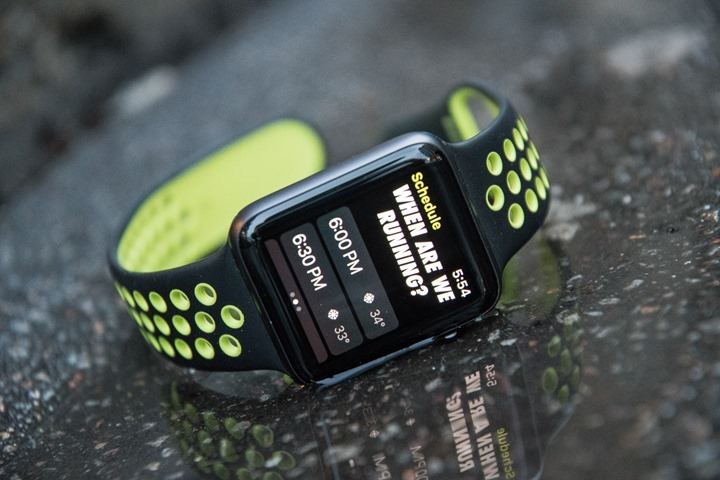
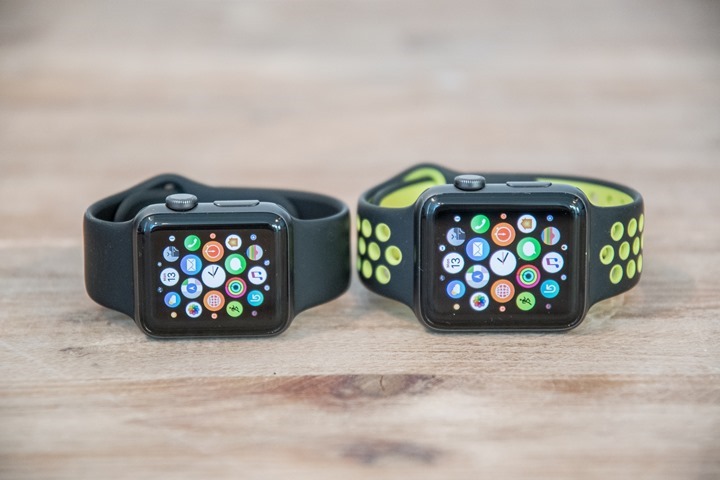

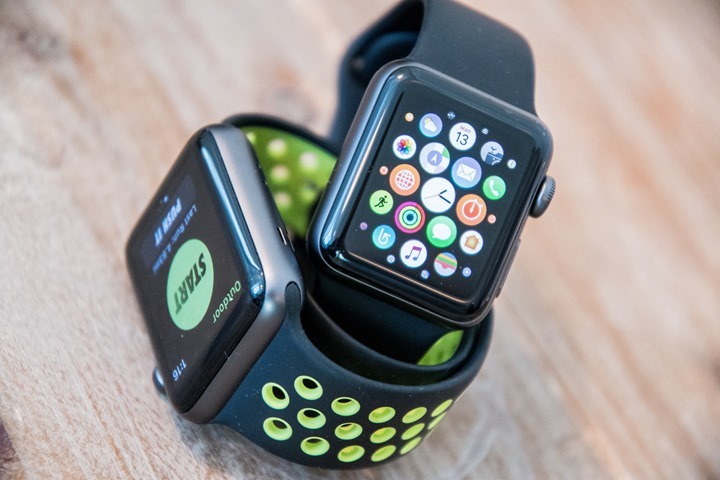
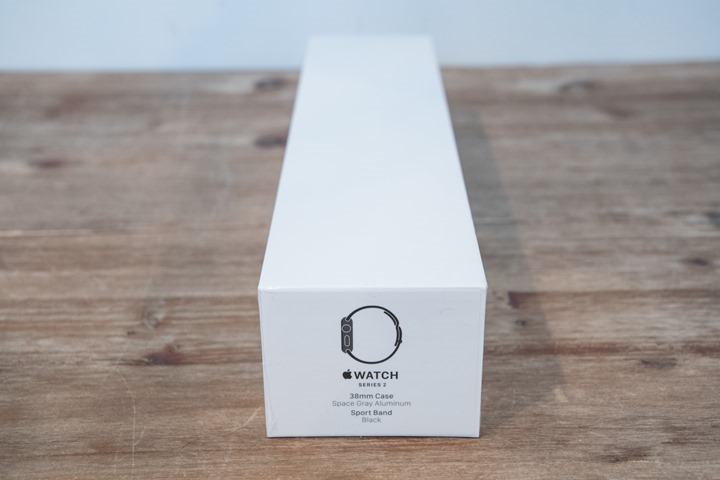
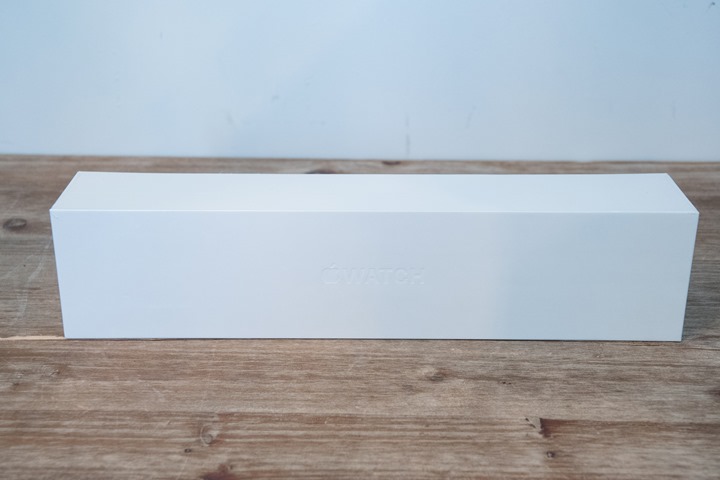
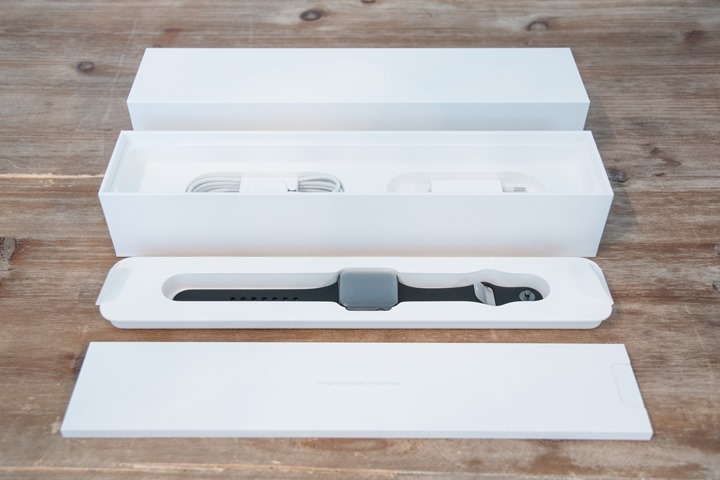
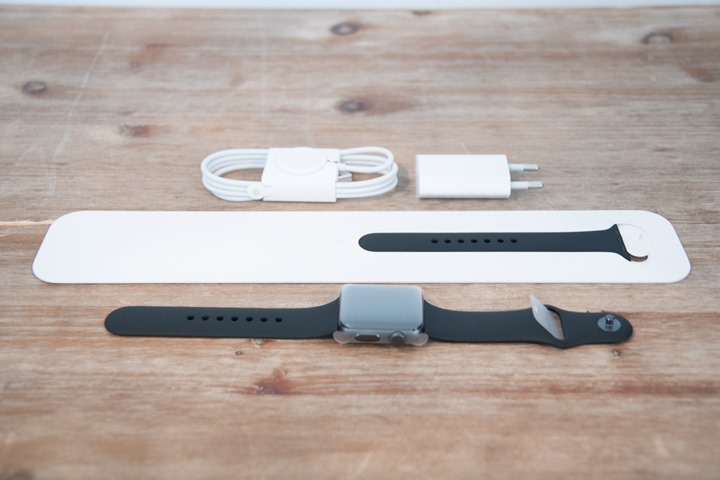
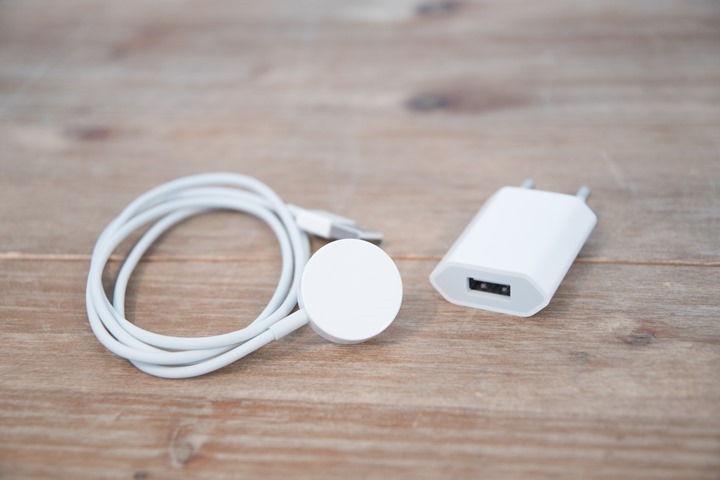
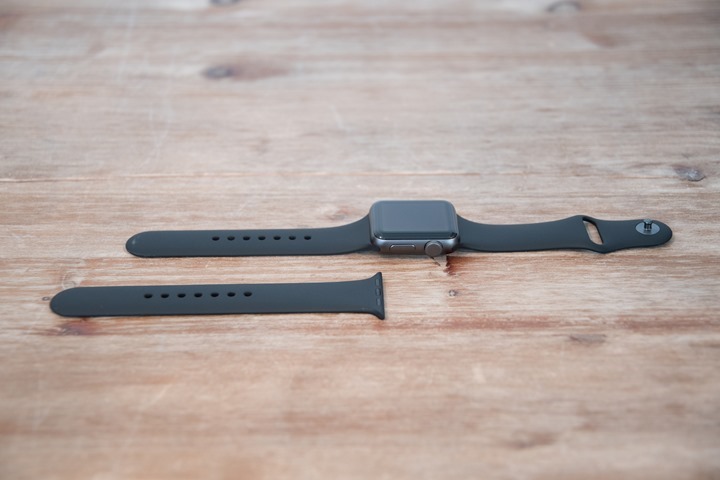

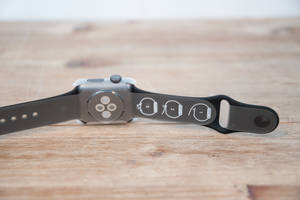
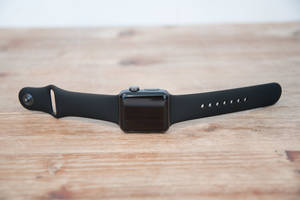
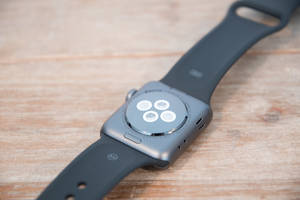
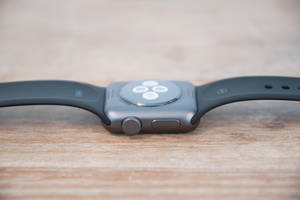
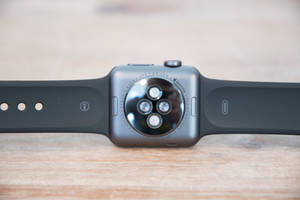

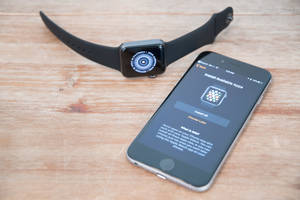
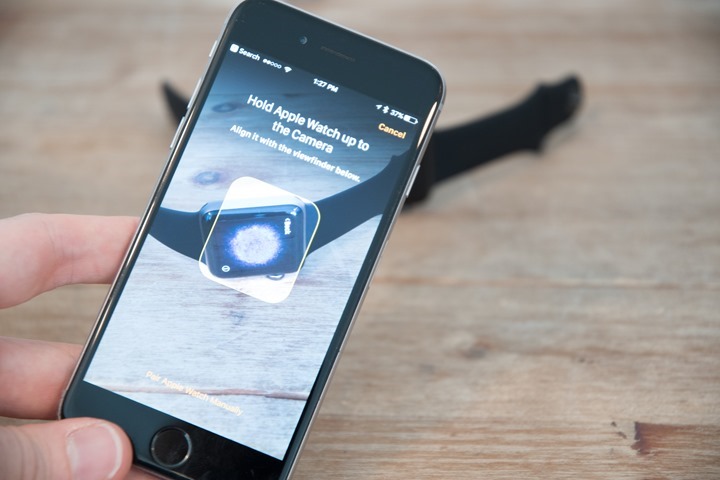
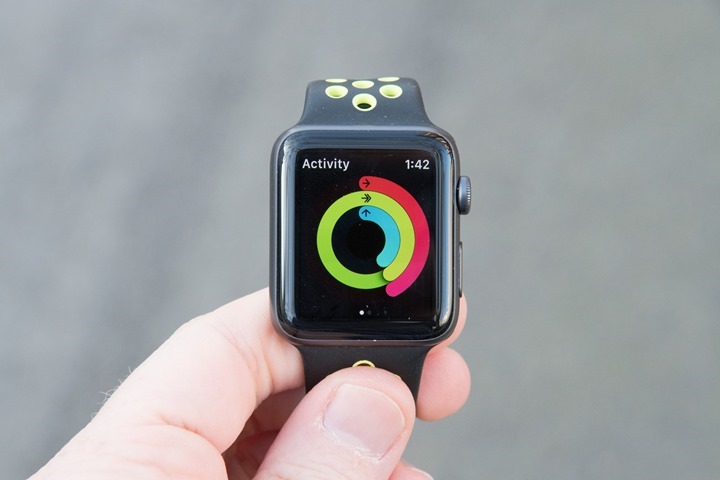
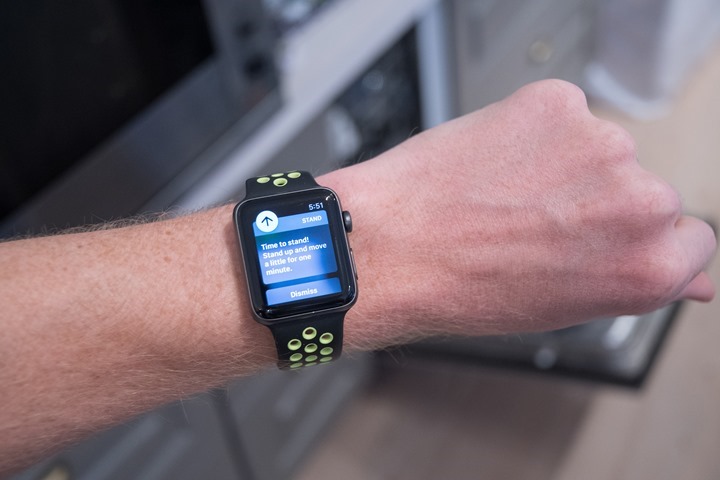
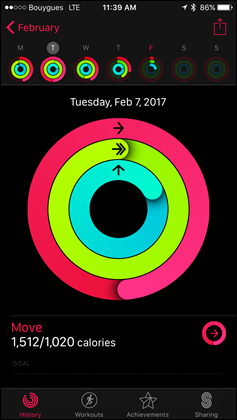
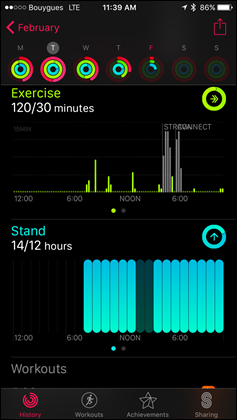
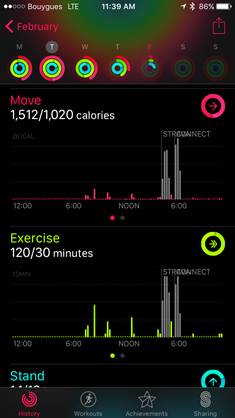
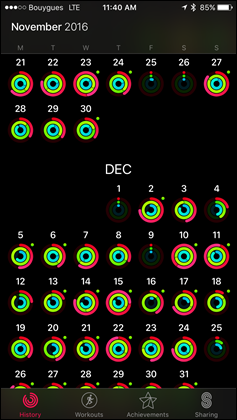
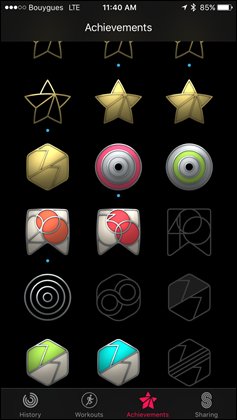
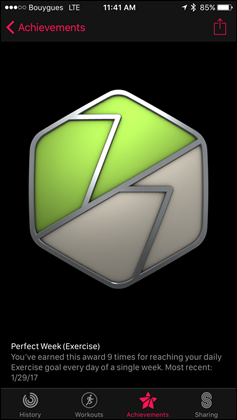
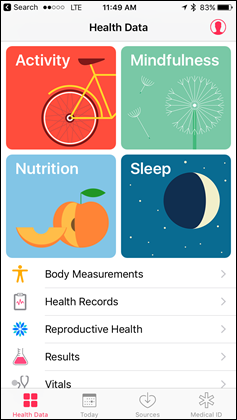
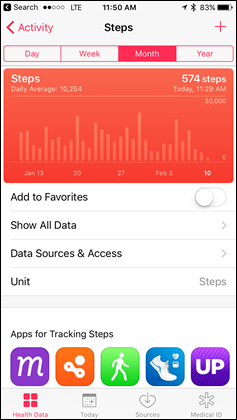
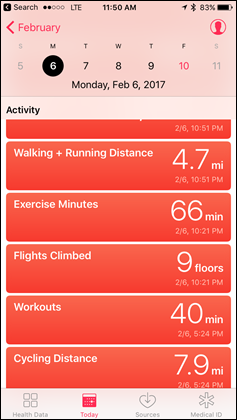
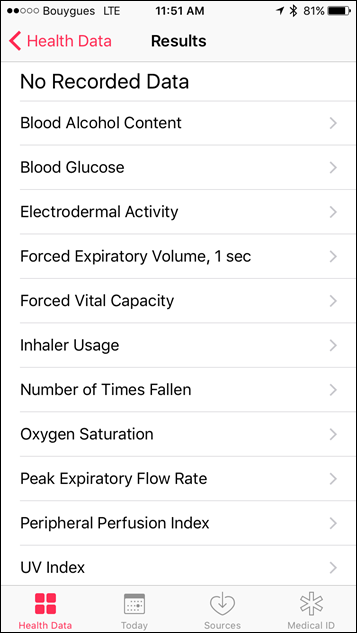
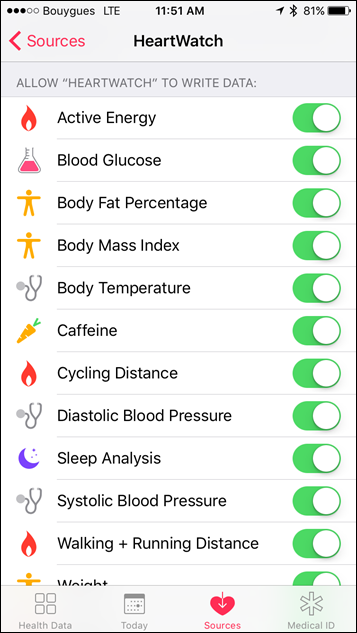
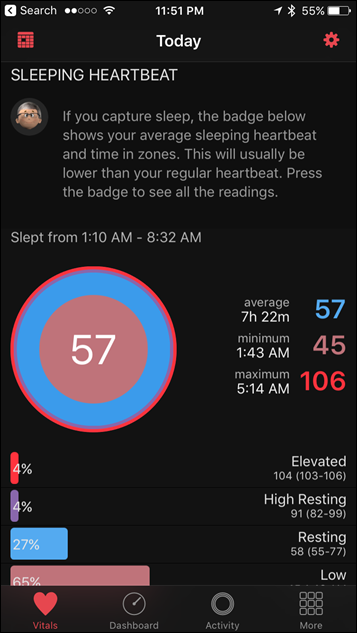
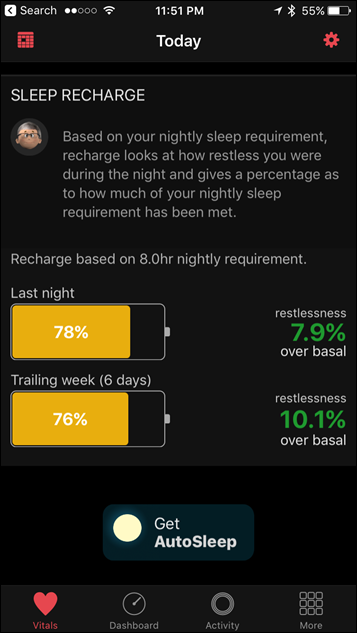
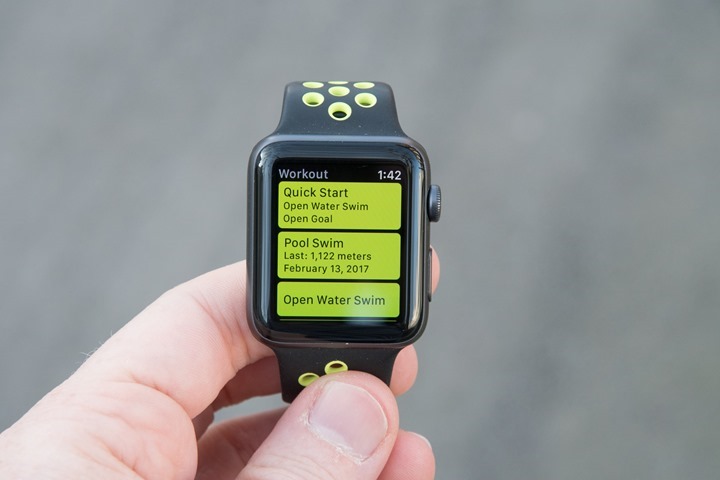
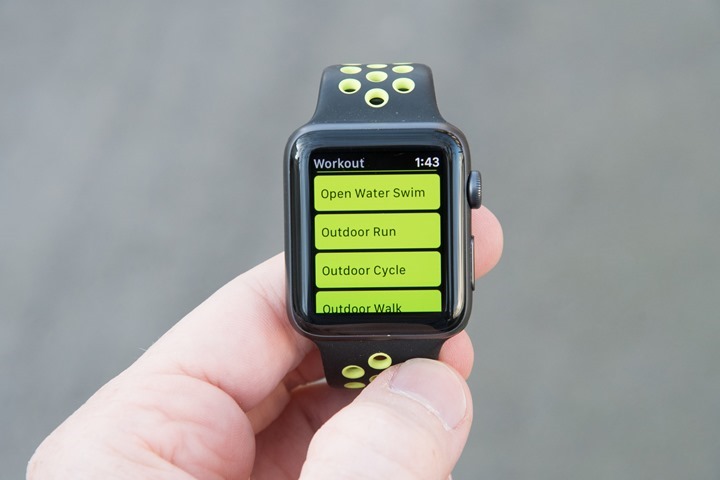
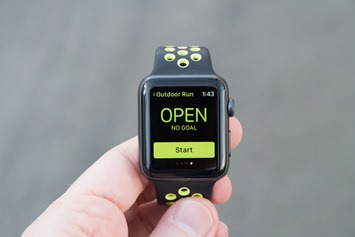
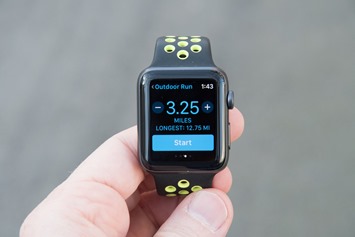
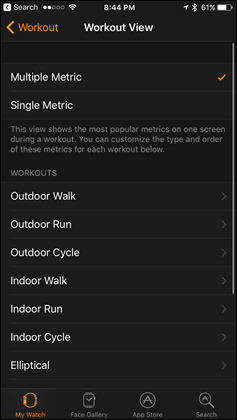

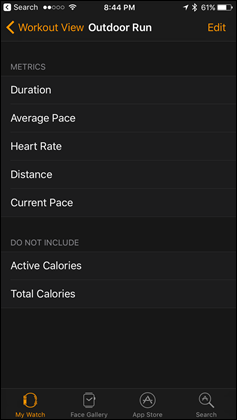
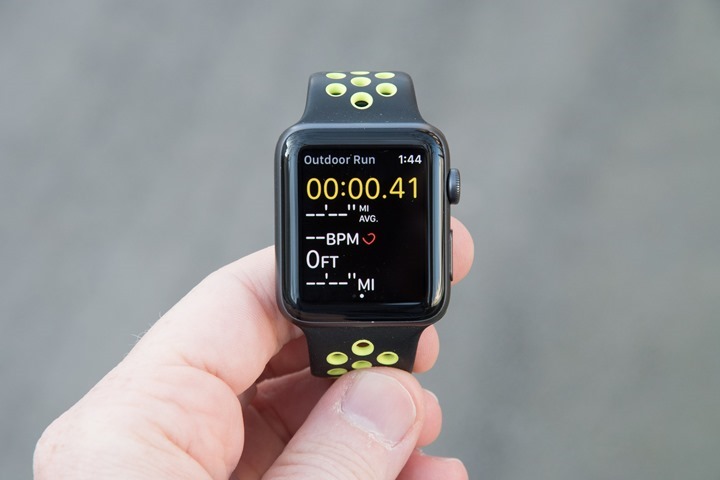
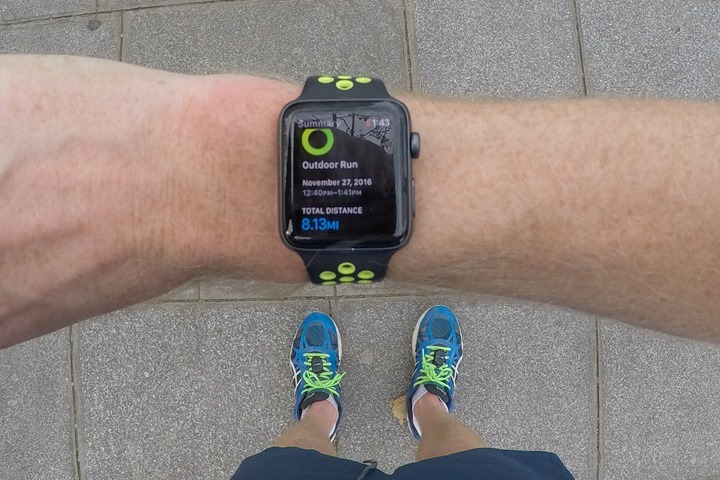
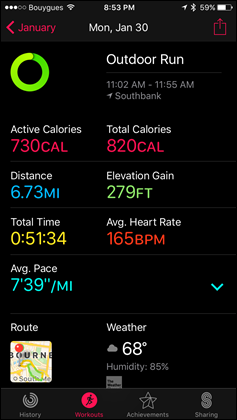
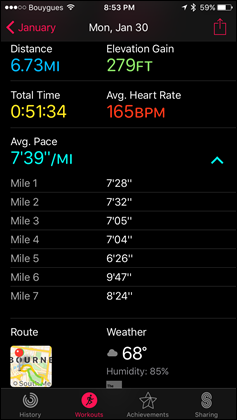

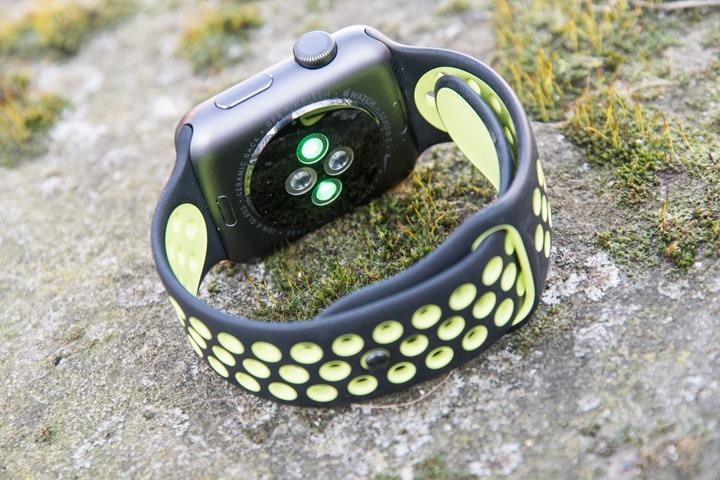
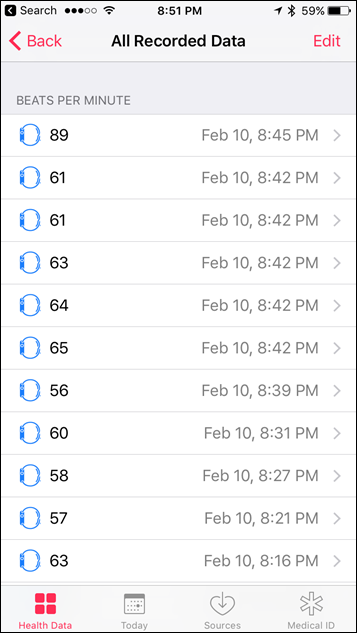
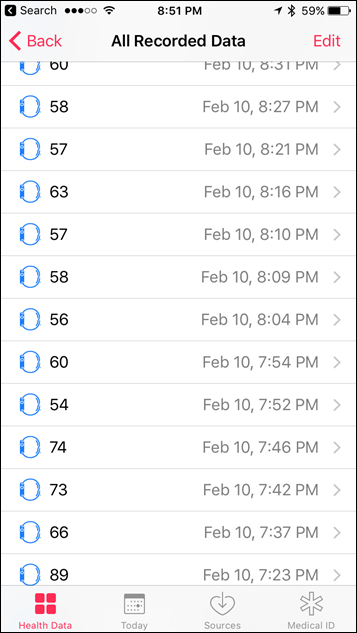
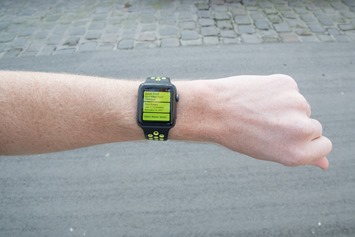
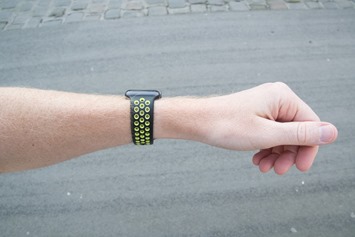
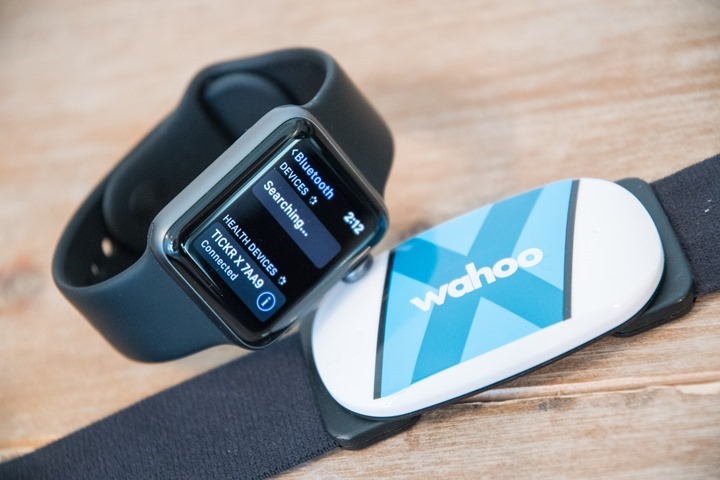


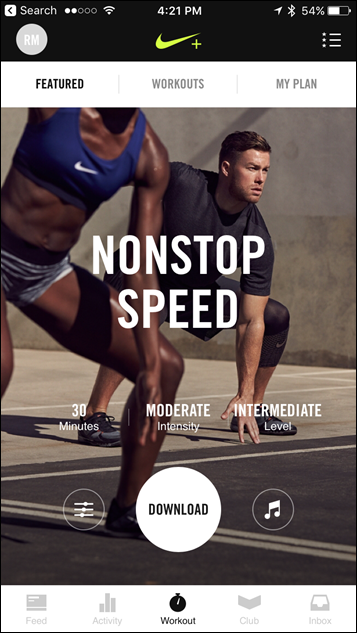
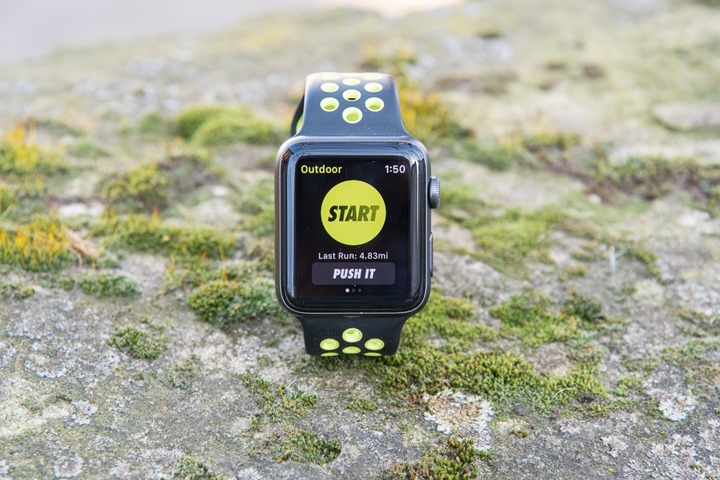

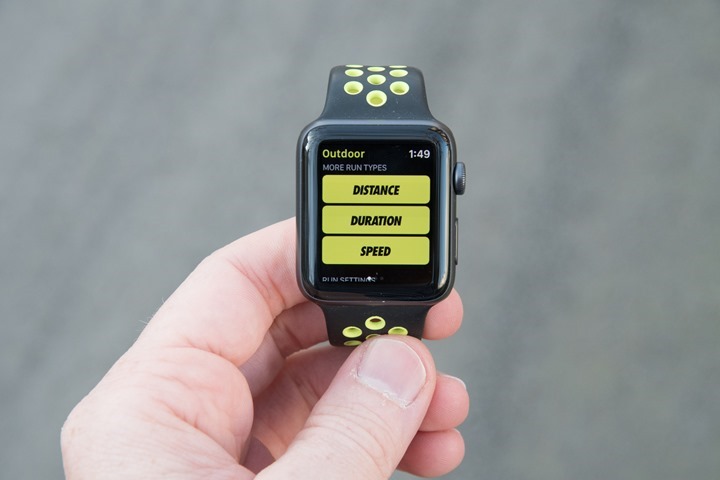
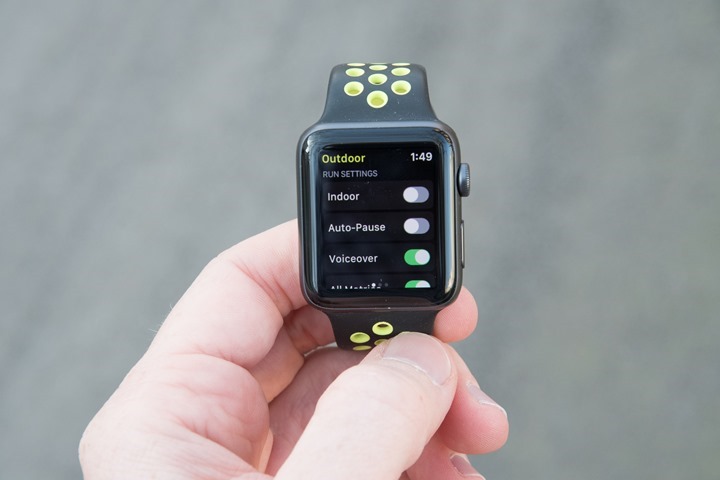
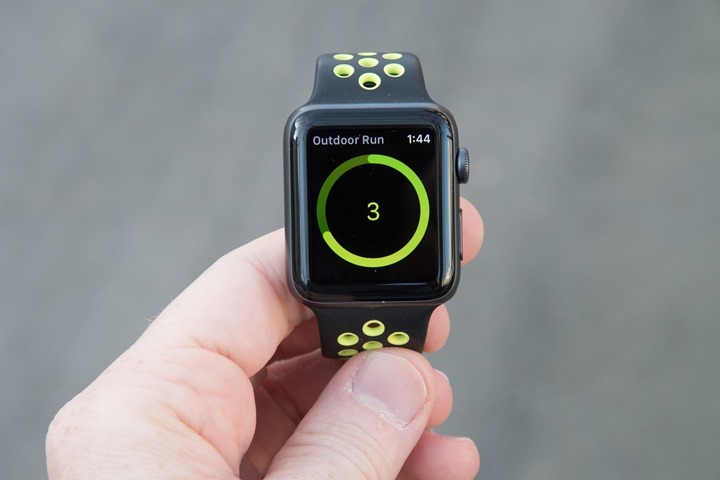
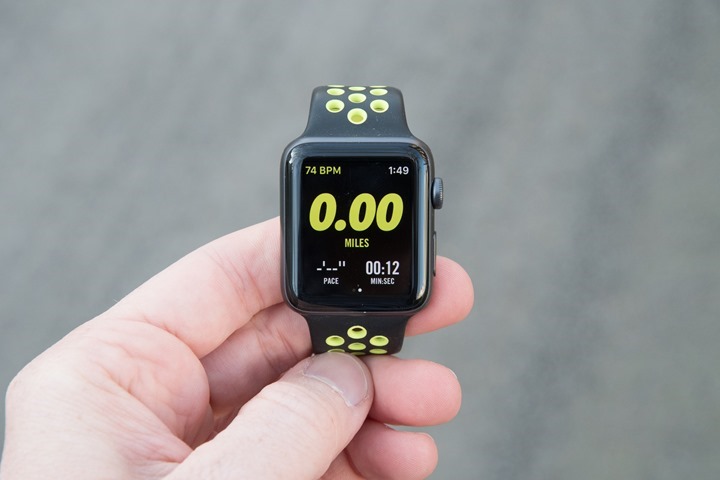
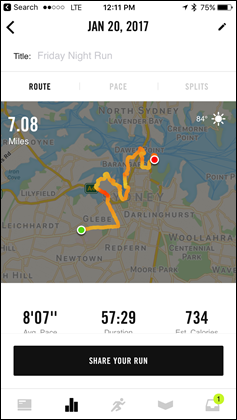

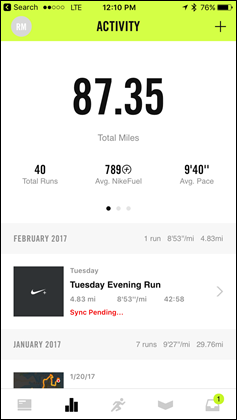
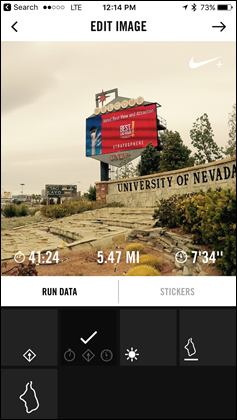
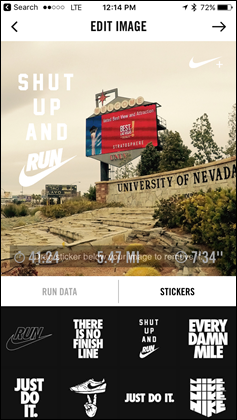
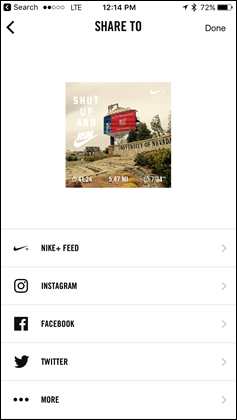
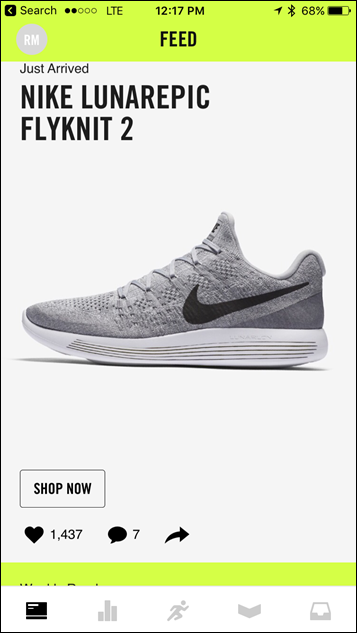

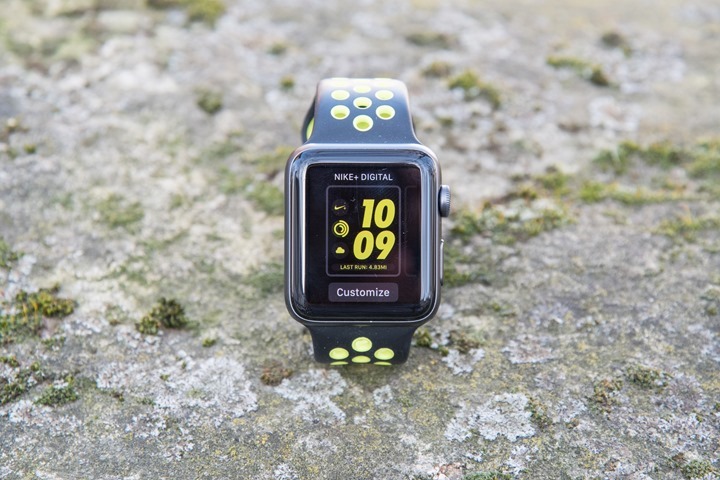
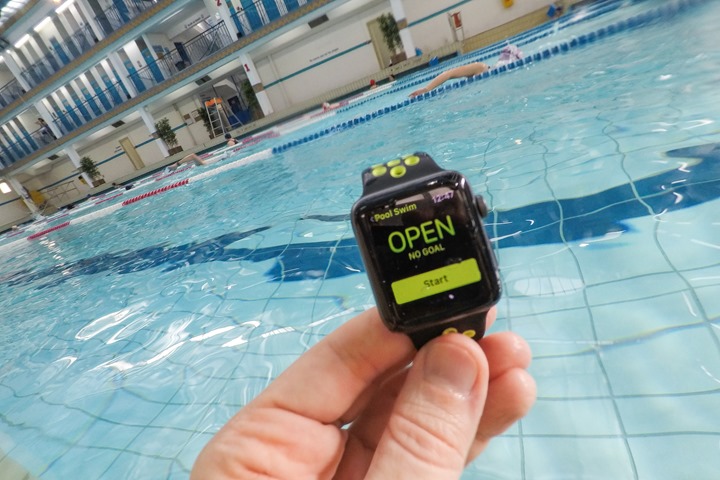
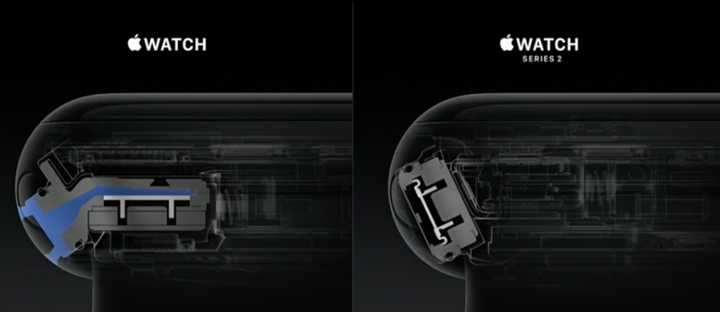
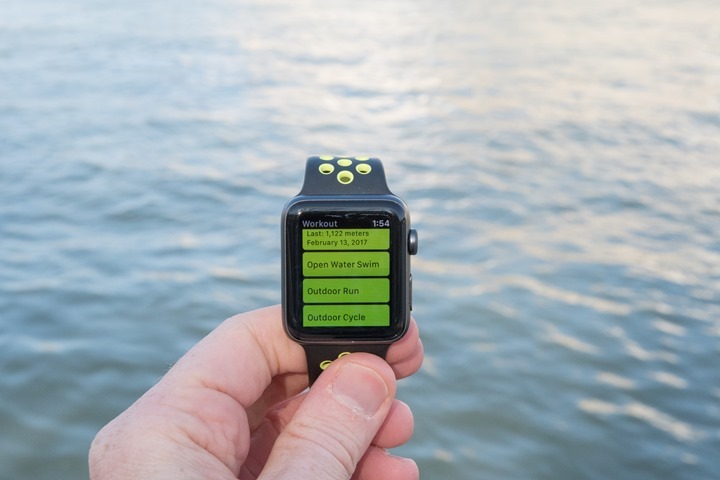

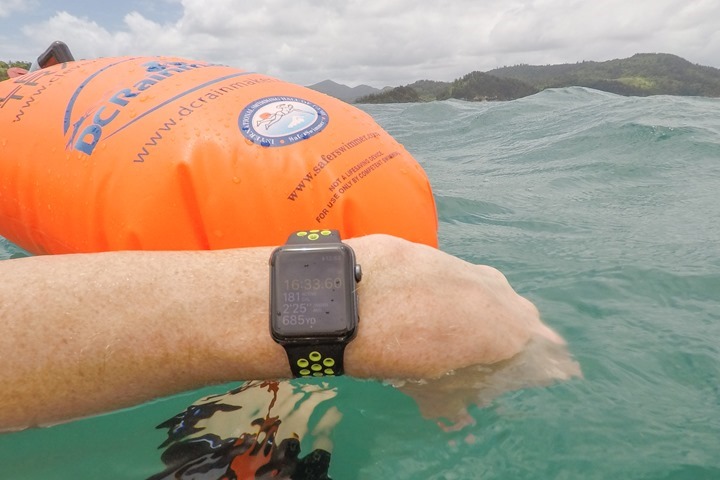
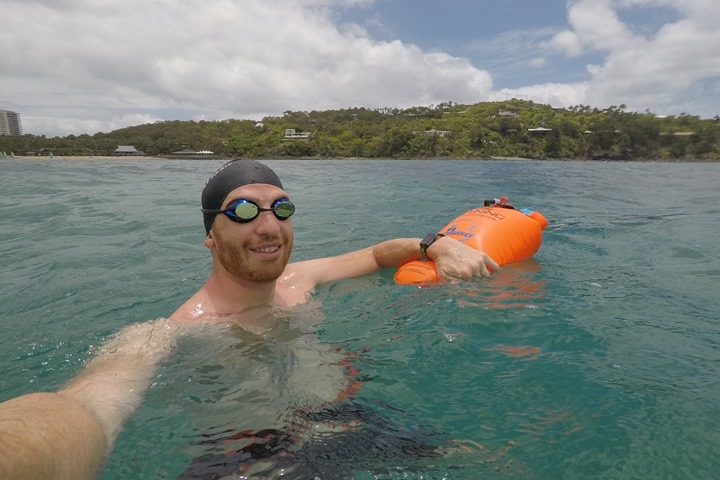
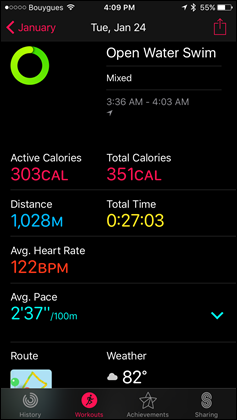
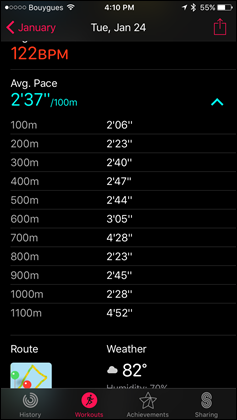

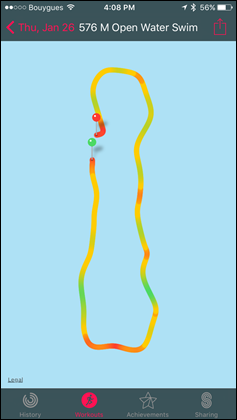

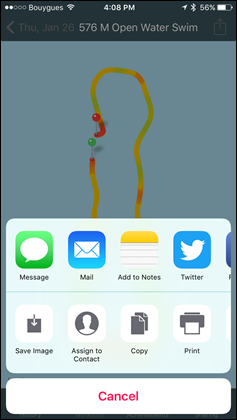

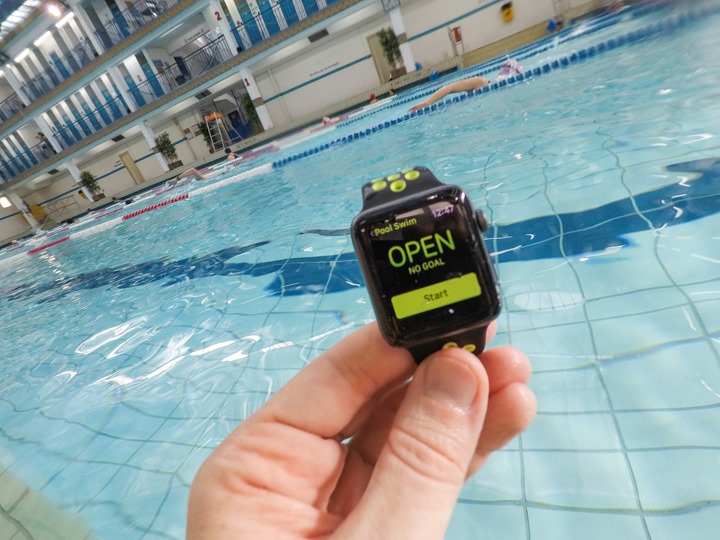


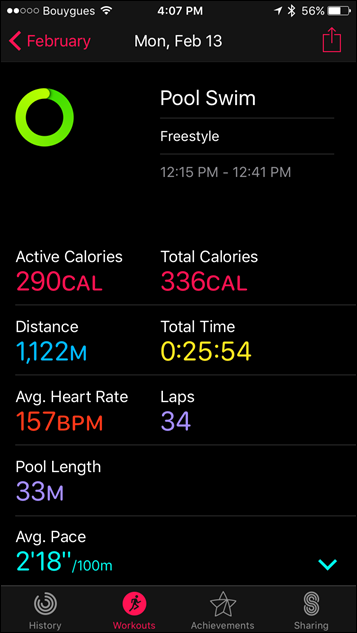

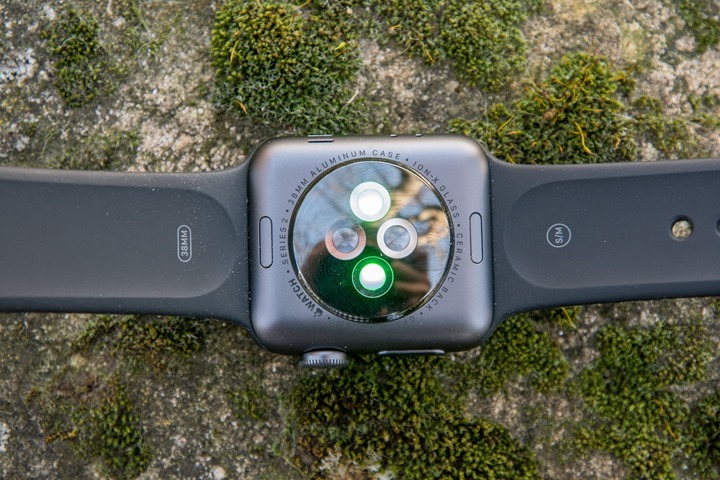





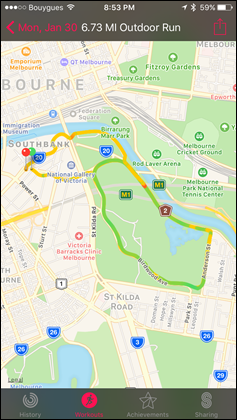
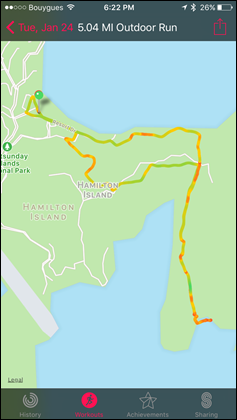
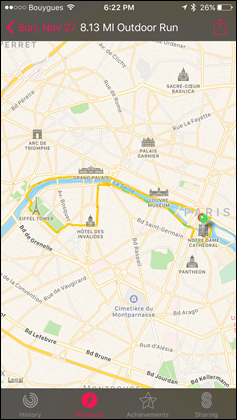
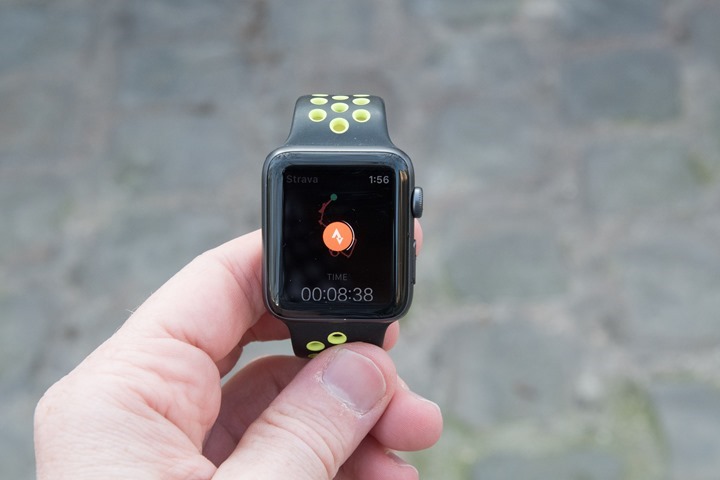
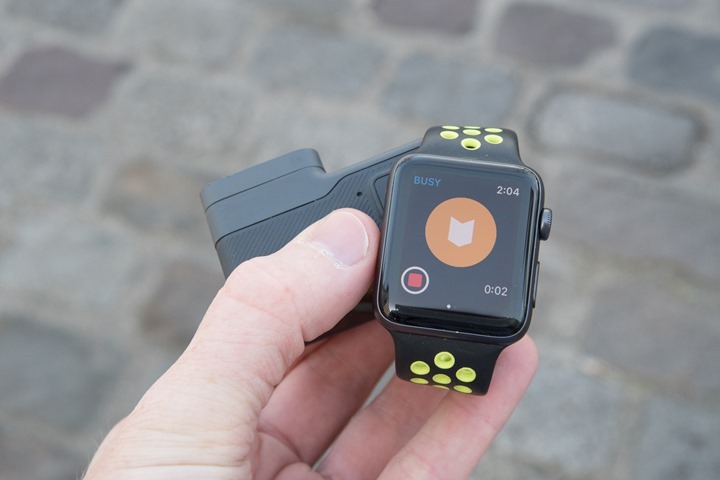

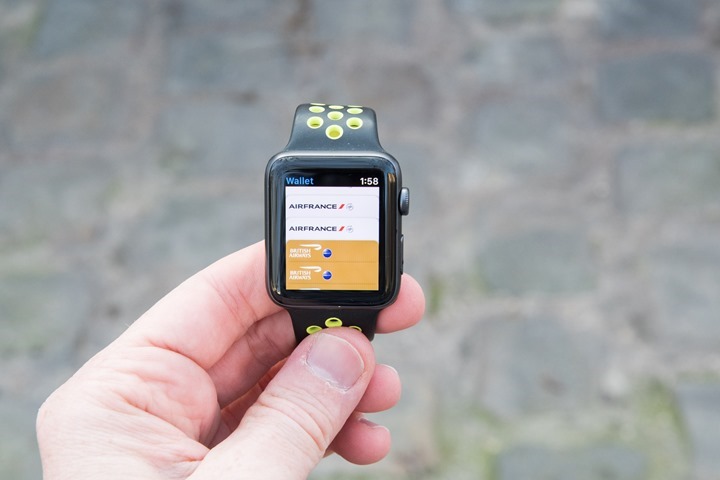
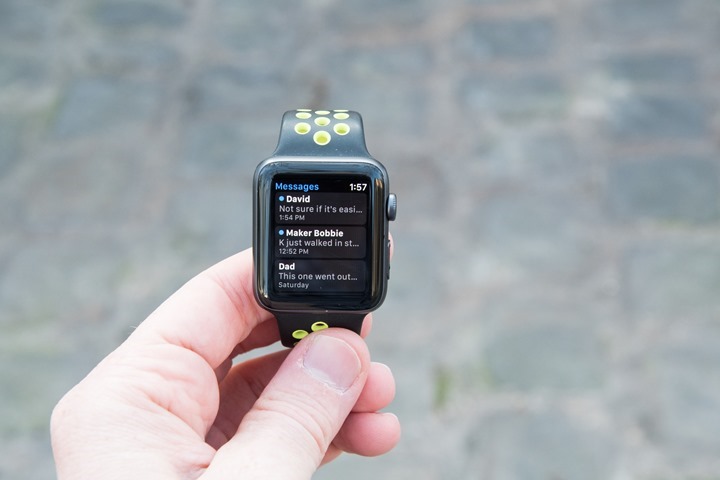
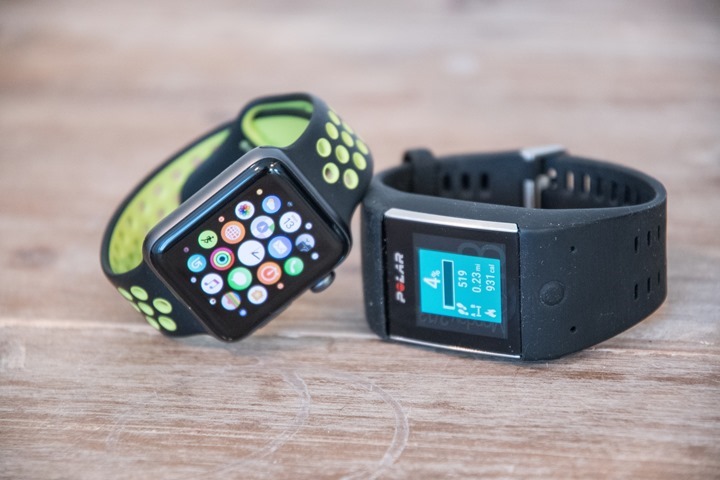
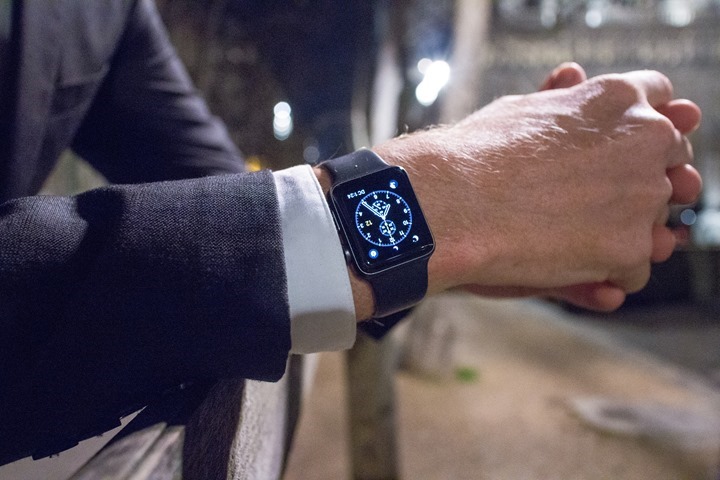





















You said that, since you can’t export GPX data from the Apple Workout app, you weren’t able to do a overlay to compare it with other GPS data. What about using 3rd party apps such as RunKeeper and Strava? Both of those utilize the built in GPS (for the beta version of Strava currently), and both allow the exporting of a gpx file. Wouldn’t it be possible to use one of those to compare it to a Garmin or something similar using an overlay?
3rd party apps definitely can, assuming they support the GPS in standalone mode.
The challenge with doing so from a review standpoint is each app applies their own ‘magic’ (or…dusting of crap). So it could go both ways on that it’s hard to know what the truth is.
What if you compared the Strava tracks from both the AWS2 (once the Strava app is available) and a Garmin that syncs to Strava? That way the “dusting of crap” should be the same on both tracks, so any differences would be the result of different underlying data.
In your GPS comparison, you compare the AWS2 to both the Garmin Fenix3 and the Garmin Fenix Series – what is the Fenix Series? The 5? The Chronos?
In your opinion, why is Apple unable to put an accurate GPS unit inside their watch? I thought for sure that they would only add gps once they could match the accuracy of something like a Garmin. It’s so disappointing to me that that isn’t the case.
Hi Ray,
for exporting GPS data from AW2 did you check “SpectaRun Workouts”? It exports Workouts from Apple Health including GPS tracks and does not seem to have any additional “magic”.
Daniel
How about doing a Photoshop overlay for review’s sake? You could try to take the picture from the Apple Watch, make it slightly transparent and put it on top of a screenshot of the platform you want to compare with.
I know, not a usable alternative for daily usage, but perhaps for review’s sake it will tell you something.
RE: SpectaRun
Yeah, I’ve been using that app forever to get Apple Watch data out. It just spits out null values for GPS data. :(
RE: Photoshop
The problem is that at the level of granularity I’d be able to do that with an overlay, things actually look good. It’s figuring out where it’s cutting the minor corners that’s trickier (i.e. slicing off a building for 100m here or there). It’s definitely something I’m looking at, but honestly didn’t want to delay the review even further to try and hack something together.
SpectaRun only exports data from Apple Health which doesn’t include the GPS coordinates. The GPS data is held within the Workout phone app which isn’t accessible to 3rd party applications.
Sorry Ray 3rd party apps cannot export data either, at least Runkeeper will not.
The only way I have found to do so is through an app called Workouts. You get a TCX file out of that.
Ims Unfortunately this either has not been updated to take advantage of mapping or basically does not contain this functionality.
3rd party apps can though – as long as they recorded the data originally. i.e. RunKeeper, MapMyFitness, etc… all can export data they recorded themselves. But not data recorded by the native apps.
I use the ‘Workouts’ app as well, but the TCX doesn’t include the GPS data. Apple says this is ‘by design’ at this point.
Not within the RunKeeper app, but you can use another 3rd party app called RunGap to pull the .TCX/.GPX file from RunKeepers server (or other services) to your phone, where it can be exported to other sites (like Strava or GC), or to cloud storage like DropBox, etc.
There are some 3rd party apps, like GPS Tracks that will allow you to export the TCX/GPX file directly to email or cloud storage. There are the apps that allow the same also.
Great Review .. about what I expected.
One question though .. in your conversations with Apple .. do they give a reason why they won’t allow the GPS data captured by the native Workout app to be exported or accessed by 3rd party apps? Seems really strange to me. Do they not understand that most people use sites like Strava, Garmin Connect to store their data and would like the option to export to those services.
No real good answer there beyond privacy concerns.
I think longer term we’ll see them change it.
Hi Ray, great review. I understand that Samsung gear S3 is a better smartwatch than apple’s, with better sport software too. Do you plan on review it?
Well samsung gear S3 only splashproof *Not suitable for swimming or diving
That fact alone make it inferior than Apple watch series 2 in my opinion, dont get me wrong i use garmin fenix 3 hr not apple watch user ;)
Ray, minor quibble: it should be “different tack” (sailing metaphor) not “different tact”…
And at least two “it’s” that should be “its”…
Thanks!
Nigel. You do know kids are dying in Aleppo right?
ffs.
Great review as always!
Is it possible to get your run cadence displayed?
Finally, I thought this moment will never happen :)
One thing work mentioning is the fact that watch apps sometimes crash and it mess up the picture (you lose your workout if you did it untethered or you may end up with two workouts – from both phone and the watch)
I believe I had the NRC app crash on my twice, but it was way back in November, and hasn’t happened since.
I have to admit, I was more interested in your general opinion of the AW as a smartwatch than a fitness device. I’m lucky enough to already have a Garmin 735XT for all my workout needs, but have been considering an AW as my daily use smartwatch since the 735XT is pretty basic. Notifications are nice, but sometimes it’s also nice to be able to respond to them. It sounds to me like it’s the only ‘smartwatch’ you’d consider, which is good to know.
Of course, all the fitness stuff is about what I expected. For 90% of people I bet it’s more than sufficient tracking fitness.
Great review Ray. Some quick comments from my use of AWS2 over the past several months:
1) I gave up on the Runkeeper app when it crapped/crashed on some initial attempts to use it standalone (without the iPhone) since Runkeeper claimed that feature was ready for prime time in December. Hoping Strava’s version of utilizing watch GPS will be more reliable.
2) I agree with your comments on HeartWatch. I’ll add that the UI on the iPhone is pretty dense, and I sometimes get lost in the wealth of data crammed together.
3) I had wanted graphing of HR in workouts like I had gotten used to with Garmin Connect. Activity app doesn’t do this. And as stated above, I don’t yet consider Runkeeper reliable. There’s an app called Workout++ that, after completing an activity (in Activity if you want, don’t necessarily have to initiate the workout from Workout++), you can see a graphical HR representation.
4) I do more HIIT and soccer than running, so intervals are my norm. I get frustrated by the kinds of dropouts you mention. Since there is much repetition in my workouts (same numbers of sets on the same exercises over the same time intervals), I have built a multi-month library of data that I can kinda fill in gaps and still get a sense of my intensity level for a given workout. If I dig unique workouts/routes on a regular basis, I would be more frustrated with the OHRM performance. But honestly, I have not found the OHRM on the AWS2 to be any worse than the Garmin Forerunner 235 that I wore for a year, doing the exact same workouts.
5) My AWS2 picks up my HR in less than 10 seconds when starting an activity. Was surprised to read yours took 60 seconds at times. And yes, I have experienced the same sense of the watch seemingly giving up early on reacquisition of HR when it drops.
Great review. I won’t be upgrading from my original Apple Watch then!
Just a point re the Nest app. You can change the temperature on your thermostat using the digital crown or by pressing the buttons (like on the phone app). You just need to select the thermostat at the bottom of the screen first.
Gotchya. I’ve only got Nest Cams (lots of them), but no thermostat system. Thus explains why I don’t see that piece.
So for pure sleep tracking and resting heart rate analysis – is it “good” enough to switch from a Garmin?
I had an earlier Apple Watch and moved over to Garmin forerunner as it was more accurate.
I desperately want the Apple Watch back as, from a smart watch point of view it is so much nicer.
Do you give it a thumbs up for heart rate and sleep when using the third party (paid) app?
I’ve been testing an AWS2 for the past 1.5 weeks (while also still wearing my Garmin), and for me the sleep tracking from HeartWatch (with AutoSleep purchased) isn’t as good.
I then tried using the Pillow app, running both on my iPhone and on the watch as I slept, and it seems a little better although it’s reporting I’m awake quite a bit (and the Watch is giving me credit for standing during hours I’m sound asleep, so lord knows what sort of funky sleep moves I’m doing). Pillow does need to be manually started and stopped though.
The good news is the battery is good enough for sleep tracking. I usually workout 1-1.5 hours a day, and only have to charge the Watch during my shower and for 15 minutes before bed. (Airplane mode while asleep helps.)
Probably taking it back before the 2 week refund period is over though, and spending that money on a fancier Garmin instead.
Thank you for another awesome in-depth review.
The apple watch feels a bit purpose-less to me, it is not a good sports watch, and smart watches in general have very little real world usefulness. Just another (very small) screen to look at. And some are even extremely clunky to wear.
let’s see if / how the smart watch market can evolve in the future.
Hi Ray,
Thanks for the review! I noticed in the swimming section that you had HR data in the summary screen. Did you ever reference the watch’s underwater HR recording abilities to something like the Garmin Swim HR Strap? You mention that it “Matches other watches” for accuracy but it seemed like that was referring to distance/speed metrics.
Thanks again!
That sentence was focused purely on the distance/speed aspect.
I might do some testing of that down the road, if Apple were to open up GPX export. Until then, it’s sorta an academic discussion given very few people would want openwater HR data without OW GPS data.
I also have the same interest about HR accuracy underwater.
Cheers
My personal experience with the Series 2 is that it doesn’t pick up your heart rate very well while swimming. Most of the swims (pool) I have done show random heart rate values interspersed with lots of missing values.
Just to level set, the AW’s HR sensor works very well for me while running and cycling .. almost comparable with a chest strap.
The series 2’s display also should be about twice as bright as the series 1’s … You suggest that they are the same …
Cheers!
Yup, I cover that in the early ‘Models’ section detailing all the nuances.
Greta review Ray, spot on. I’ve got both a series 2 AW and a garmin 735xt, the Apple Watch is my daily wear, it’s a great smart watch. It comes off and the garmin goes on whenever I do any sport I want to track, the garmin kills it for running, cycling, etc, etc.
I actually run with both as I use the AW as an iPod driving my BT headphones (garmin how hard would it be to add 2gb of storage for some music, come on…..).
I love the AW but it’s frustrating, Apple wouldn’t need to do much to make it a killer platform for everything. At the moment I think they are focussed on the smart watch aspects and have fitness as an add on. Which is fine for the ocassional fitness dude, not so good for most of the audience on here I suspect.
I can explain your Garmin LiveTrack GPS issue: If the phone is within range of the watch the watch will never use the internal GPS. It’s only for when you leave your phone behind.
But that doesn’t explain the issue, that only adds to it:
A) Garmin doesn’t use the phone’s GPS for LiveTrack, it uses the device/unit (i.e. Edge unit) – that’s largely the point of LiveTrack, to ensure offloaded GPS to the Edge. Battery life testing I’ve done seems to confirm this is working correctly from the Garmin side of things.
B) Even if Garmin was using it improperly, it shouldn’t block the Apple Watch’s use of it. After all, more than two apps can use the GPS on the iPhone just fine.
I totally get that it’s an edge case, but to me it raises a red flag that something more concerning is going on. Canary in the coal mine type of thing.
I think John is right, but it is an edge case (or Edge case). I believe what is happening is that both the Apple Watch and the Edge are using the limited bandwidth of Bluetooth Smart to stream GPS data. From the phone to the Watch in Apple’s case and the Edge to the phone in Garmin’s. They may be both trying to use the same channel or there is just not enough bandwidth. You might try setting up the watch to record a workout and get that working, then initiate a Live Track session (or don’t even start the Edge workout until after you are recording data on the watch) and see if that works.
Bandwidth issues seem unlikely – GPS data is a handful of bytes once a second.
Looking at a Garmin FIT file on my PC, I can see it averages about 350 bits/second, including HR, cadence, running dynamics and temperature data as well as the location data.
I agree that bandwidth would be light, but Bluetooth smart is very low bandwidth as well. The streaming of GPS data is not simply the transfer of 1 converted textual location every second. I do not know the implementation of the Apple APIs, but GPS data is typically received at 5 to 10 Hz and includes significant overhead beyond a data point. The current Watch APIs automatically stream data from the phone rather than from the GPS chip if the phone is available. At what point that data is translated to location data is in the implementation. All I am saying is that there may be some interaction between the Bluetooth implementation of streaming live track data to the phone at the same time as streaming GPS data to the watch. It is possible that the watch only transfers data when a request is made, but that would require additional overhead and possibly latency.
Garmin devices generate GPS locations once a second. There are devices around which generate locations at 5-10Hz, but 1 second is the norm in the sports industries (higher rates drain the battery faster for little gain in accuracy).
BTLE bandwidth is at least 125kbit/sec (not that you would try to use it all, the point with BTLE is to have the radio operating only briefly for data transfers for power economy).
If the overhead was 100%, 700 bits/second would buy you GPS and much more once a second. Maybe it’s text rather than binary – an NMEA message would be 82 bytes maximum, 100% overhead gives you 1312 bits/second.
It’s something like 1% of the bandwidth potentially available.
All I am saying is that, whatever the interaction may be, it is hard to see how GPS transfer from the Edge could be affecting the AW communication based on bandwidth considerations alone.
One thing I’ve noticed with my AW Series 2 vs my different Garmin watches is the pace graph for the AW is incredibly erratic. While the overall pace may be relatively similar, the pace graph for the AW is all over the place. Is this just because of the inaccuracy of the GPS itself, but then the overall pace is smoothed out using various algorithms?
I think Apple just hasn’t figured out yet what all the other fitness wearables have, that to get instant pace you can’t rely on GPS data alone, and certainly not without using smoothing or predictive algorithms to message your data. Everyone else uses data from the accelerometer to augment the instant pace data. It’s as if Apple didn’t do any actual user testing. They show all these fancy labs and how they have “cracked” the UI for things like wheelchairs, but then never bothered to test Instant Pace, one of the most (if not the most) used metrics you use while actually running. It is noticeable that in Ray’s video, the pace went blooey as soon as he went under a bridge. Maybe they will see Ray’s review and fix this. Hopefully he gets lots of clicks – tell your friends ;).
Kind of confirms what I am thinking – have my trusty 910 for runs, rides, etc. Have a vivoactive as a daily driver and smartwatch with very good battery life that is my backup to my 910. AW1 or AW2 is a great smartwatch but no yet there for a fitness watch given my needs. The battery life of AW is a killer for me – I need my watch to be not another device I need to worry about daily.
For what it’s worth, my AWS2 only needs to be charged while I’m in the shower each day. That’s with 1 1/2 hours workout daily, usually. But it’s winter in Canada so I’m treadmill running, GPS use might make it more of a hassle.
(Still, the battery is a weird source of anxiety for me and I still wear my Vivoactive HR as a backup.)
I never worry about the battery on my Series 2 AW .. it charges in the morning while I am getting ready for work or in the evening while watching TV. I never had it run out of juice during a workout. I wear mine about 22.5 hours a day including sleep tracking with the incredible AutoSleep app.
I find that people that own an Apple Watch don’t really worry or have issues with the battery life. You just charge it routinely like your iPhone.
As Bob says, it’s fine if you just pretend it’s an iPhone and charge it daily.
I find that I can pretty consistently make it 36-40 hours on a charge. I can’t wake up twice, it’ll die before then. But I can usually make it just past dinner or so – depending on how long my workouts were.
Great review as always.
I’ve had a Series 2 for two months now and find it a fantastic Gym buddy. I use the Gymaholic app which is great for capturing my weights lifted and routine. I also stream my Apple Music from the watch direct to Bluetooth headphones as well as use the standard fitness app for treadmill, spinning and swimming.
Perfect kit for a phone free workout. The RunGap app allows this to be shared easily to Strava and MapMyFitness
“It’s just a fart in the blue wind.” That might be my favorite line yet from a DCR review.
Great review as always. Thanks.
Thanks Ray, another great review! I’m particularly interested in HR measurements (resting and exercise). You mentioned the Fenix 5 will have continuous HR measurement. Do you think it would be more accurate than Apple Watch 2? Trying to decide between them! Thanks again :)
I actually don’t see too many issues with the Apple Watch 24×7 HR performance, it’s seemingly OK there and seems to sample well. I expect the Fenix5 to be in that ballpark or probably slightly more samples.
Thanks Ray, I really appreciate the reply!
I’m surprised about the heart rate performance reported here. I’ve been using an Apple watch for a year and generally thought it was as good as a Fitbit for HR; not that I actually tested it.
I think the biggest problem I have with the Apple Watch is the fact I can’t see stuff on my Macbook. I’m hoping Watch OS4 brings something new; because as Ray reports; the Activity/Heath Apps are limited.
For someone who is really into fitness, the Apple Watch data on the activity app would be mostly useless.
To be fair, the Fitbit HR performance isn’t that good. ;)
In Polar Flow app you can share your activity with a map or a picture, and choose the metrics you want to show.
link to support.polar.com
Will you ever test the Gear S3 Frontier LTE?
“There is no Apple Health ‘Cloud’, or online platform (such as with Google Fit, Garmin Connect, Fitbit, Withings, and everyone else in the world).”
I don’t think Mio (Fuse, Slice, etc.) has an online platform, do they?
I thought they rolled out one last year.
Though honestly, I wasn’t really including them in this grouping.
I enjoyed Ray’s brutal honesty in the pacing video.
“heart rate crapped out again – well, that’s just the norm”
cracked me up
For some reason (Apple brand cocaine/marketing hype) I have been compelled multiple years in a row to buy the new Apple Watch, and each time I’ve bought it I’ve ended up selling it back a couple months later, utterly bored of it. It’s a good smartwatch but ultimately doesn’t do anything I really need, that a simpler Garmin doesn’t already do (like setting alarms and timers). It’s also ugly. I always think it isn’t at first (Apple cocaine/marketing hype) but then eventually realize that it is. It’s just a dumb bulbous screen on my wrist. It’s not bad for working out. It’s almost good, but at the same time it’s terrible. I hate that the screen turns off when Apple thinks it should and not when I think it should. I constantly end up fighting with it just to get it to show me my stats while swimming or running without the screen turning back off. It desperately needs physical buttons as well to control workouts. Apple should released a further focused “sport” version of their watch that gets rid of all non-fitness oriented features and adds more fitness metrics and interesting data. Then maybe I’ll buy it again (and sell it two months later when I realize my Garmin watch was better).
Hmm. I’ve down the same but with Garmins. The 920XT was too big an ugly to wear as a daily watch. The 235 was a horrible, horrible smartwatch. I’m thinking of returning my vivoactive HR 1) it’s downright big and ugly and 2) after a recent update is suddenly decided to restart 1-3 times during a 40 min run.
The fenix is interesting but considering I can get myself and my wife an apple watch 2 for price of one fenix it seems Garmin is intent on squeezing people out of the market.
Thanks for the review. It was nice to know that your review confirmed my feelings. I bought an AW2 and returned it after a couple weeks. It was a great smart watch, but I thought it was really lacking as a running watch/fitness device. I think it’s one of those watches that you buy because you want a smart watch and the fitness stuff is a bonus. Versus buying a dedicated fitness watch where the smart watch features are the bonus.
I returned mine and bought a new Garmin.
Good review, but especially glad it’s fitness related and not a drone
Plenty of us run AND fly drones. I like ’em both.
What, drones aren’t fitness related? How do you know you went for a run if you don’t have aerial cinematic proof.
I concur on the drone flying. I will also say that I really enjoy my Samsung S3 Frontier.
Not sure if you want more or less drone stuff Sean….
But, I believe I’ve done only four drone posts to date:
A) Staaker post last week
B) GoPro Karma review in November
C) DJI Mavic review in December
D) Airdog review last March or so
Cheers
Ray, 2 questions:
1. You said no to footpod, but yes to accelerometer. So would it pick up any data from a stryd sensor? I think we might need a new row for power meters under running, as the VAHR, fenix units can receive/record this.
2. Does it broadcast HR in any way? ANT/BLE? My feeling is no.
1) No, it can’t connect to a BLE footpod in the native app. I don’t know what 3rd parties might support it in their apps.
2) No, not at all unfortunately, I’m not aware of anyone doing rebroadcasting – though that’d be super cool if someone was.
Currently no. Technically it would be possible because Apple already allows connecting BLE HRMs through healthkit, but footpods of any sort are not currently supported.
We are still few steps from a smartwatch that can also be used as a proper training tool. Hopefully likes of Polar entering the market will change that.
If you want to use Stryd, then Garmin is currently the only real option at the moment. (I use both myself).
I’ve discussed this with the iSmoothrun app developer which you’re probably familiar with, and apparently currently Apple prevents this. Might change in future though. Let’s hope for that.
It has a barometric altimeter? That’s surprising!
I bought a Garmin 235 last spring to replace my Polar M400. The M400 was a very decent watch but I wanted some of the extra features the Garmin had.
I was using the 235 as my daily watch outside of running but as a smart watch for notifications I found the dim screen almost impossible to read in low light situations or even in my car. I just could not make out notifications. I found them much easier to read on the M400. The backlight on the 235 didn’t help much surprisingly
During the Black Friday sales I toyed with the idea of getting the Fenix 3 which apparently had a brighter screen and adjustable backlight. I decided against it as I wasn’t sure it would help with readability enough. Also, a new version of the Fenix was due at CES.
I decide to get the non-Nike version of Apple Watch and I find it MUCH MUCH better in terms of readability. No problems whatsoever. As a smart watch it is second to none.
I use the 235 for running only. I thought maybe the AW might be a good backup for running or use in other sports but from Ray’s review it seems like it is too inaccurate. I’m actually surprised how poor it is compared to other running watches.
Some Apple pundits I follow have started exercising because of the AW. It’s good I guess that the AW may introduce people to running that never would have otherwise. It’s too bad that AW isn’t very good at it.
Watch OS 3 does have an Emergency SOS feature – which can be set up in Health App, Medical ID. A user can call 911 (works internationally) by accessing the option in the “Power Off” menu
Talking about the Nike+ Run Club App there’s one little feature that makes a big difference in my eyes: voiceover!
Actually this feature appears only if the watch is set to English (maybe other languages will follow?).
The big segment of runners that uses an app to run (apple watch-users?) loves audio-feedback while running. Every mile or km you get informations about time, pace, distance, hf,.. on your headphones. You don’t have to look at your watch all the time and in winter you can keep measuring HF on wrist.
I can’t understand why Garmin, Polar, Suunto, TomTom, … didn’t implement this simple feature, every running-app has, in their watches yet. Ppl are waiting for it (go and read TomTom’s forum; the Spark/Runner2+3-series was announced with voiceover but it doen’t work for free runs).
Finally the combo AW2+NRC has it! It’s the very first “running-watch” with audio-prompts for free runs. No more smartphone needed! This was the main reason I bought it.
Now NB integrated it in their running-watch and maybe some other android-smartwatches will follow with Android 2.0. But Apple was first.
Ray: what’s your opinion: why didn’t Garmin, Polar,… implement it yet?
Greetings!
You have been able get audio feedback with some Garmin watches for a good while now. Need to bring your phone with you as the phone is the speaker but works well if you want it.
Umm’ I think he said “No smartphone needed” IfI need to bring my phone I don’t need the garmin
yep excactly!
If you want to run only with a watch and bluetooth-headset without any other wearable/smartphone and get audiofeedback every km/mile there are only 2 solutions on the market right now (as I know):
– AW2 + NRC
– NB RunIQ
And Strava released its standalone Android Wear app lately. But I don’t know if it includes audio-prompts.
I’d be extremely hesitant to recommend the NB RunIQ at this point. Maybe down the road, but as of today…umm…no.
You could also look at the Polar M600 – I’m sure there’s some audio-alert apps out there that I haven’t thought about off-hand.
Maybe this review came out a bit (ok, a lot) late but it’s very well done as usual, so thanks Ray :)
Just a few notes from my experience with the AW2:
– GPS accuracy in steady runs was practically on par with my Polar V800
– Even the HR *average* was on par with Polar V800 + Polar H7
– As you noted, instant pace is completely useless with the Nike app, but with the default workout app it seems a little better
– Battery is fine, 30 minutes of running (standalone GPS + OHR) eat 10-15% of charge
I think this AW2 it’s the best smartwatch and a very good sportwatch for *casual* runners/cyclists (and I mean no serious training/racing purpose).
It’s just a shame that you can’t export your GPS tracks and that, differently from what happened with the iPhone, to develop a good workout app for the Watch seems much more difficult.
Why do you think that companies like Runkeeper and Strava are facing all of these problems to release a reliable app?
I know I am stupid but, will this work only with an iPhone or can an adroid phone be paired to it ?
Only an iPhone unfortunately.
I thought I had put that in there, but I’ll double-check and make it more clear.
“…It’s smart enough to not show that incoming sext to all your coworkers…” Freudian slip ;)
“It’s smart enough to not show that incoming sext to all your coworkers at the table” – a dirty mind is a joy forever?
Hey DC, thx for the great review! (I know you read this quite often)
I have a small correction to the review: About Photo sharing.
In the Polar Flow app you can actually do this (on Android, don´t have an IOs device to test it there) and of corse with the Polar logo (only a small one). I dont know since when this i possible but you have quite a few options there, eg. using a view of the map/satelite image, hr graphs and of corse a custom image.
keep up the good work! :)
Thanks!
Wow Ray! What a good review!
I myself own an apple watch Nike edition and a Garmin Fenix 3.
I am so torn between the devices because I really love the nuance and the smart watch part of the Apple Watch but I love the way the Fenix is just spot on doing the sport part.
My hopes where up so high when Apple announced this watch with waterproofing and GPS. But it just sucks when I have to do intervals based on hearth rate and pace. Also the Nike running app stopped when I my sleeves where wet (this happened twice!).
So now I keep switching between watches. During the day when I’m in the office Apple watch. And when I’m going running 3 to 4 times a week the Fenix. I do use the Apple watch when I go to Bootcamp training just to fill my rings.
Now with the more subtle sizing of the announced Garmin Fenix 5S, I am really thinking of going for that watch to be used as my all time watch.
Or am I going to wait for series 3 and hope things are better then??!?
It’s good you mention the pace accuracy. This is really one of the best selling points for a Garmin. They have pretty much nailed pace accuracy using accelerometer alongside GPS. I had a couple of Android wear watches earlier and they all suck at showing your running pace. Kind of sad to hear Apple is no better in this regard. And kind of glad at the same time I decided to get a Garmin instead.
Starting from FR23x with most recent firmware you can also connect a footpod to improve pace accuracy.
Hi
I looked at the Apple website and they indicate that brightness of Series 1 is 450 nits and Series 2 is 1000 nits.
Did you find out something else?
The Series 1 on discounts is the bargain if you don’t care about GPS or true waterproofing.
thanks again for your detailed reviews
Alan
I was told via call it is part of the Series 1 updates (the brightness). I’ll double-check with them, and update accordingly.
Either way – honestly, I just don’t see much of a difference between them. Brightness for human eyes was never really the issue for me (taking photos was trickier on the original watch).
So, did you reconfirm the brighter display? All other places I looks, including apple www, I the the impression, that the original watch and Series 1, has same display. Only S2, has the brighter one….
link to apple.com
Love my AW2 but I don’t race anymore. Use it to keep fit. It now has an app to track your heart rate while riding on Zwift. No more straps which is a blessing. My understanding is Zwift is now developing an application for Apple TV. Can’t wait. I live in Canada and the winters are long.
Good from Spain, you would know if the activities or steps or health issue, apple wacth can be seen in Garmin connect, link with garmin connect. I have a garmin fenix 3 hr and apple whact (first version) but if one day I take the apple watch I do not pass the information to garmin conenct. So the situation is that I go with two reloges, one in each hand. a little angry . thanks for everything
No, unfortunately not. That would be on Garmin to implement, as the steps data is in Apple Health and they could easily pull that data in using the Garmin Connect Mobile app. Alas, they do not (though, there was talk about it at one point).
I’ve been using an iPhone app called Rungap to copy my Apple Health activities (including those logged on the Apple Watch) into Garmin Connect. You can’t copy daily steps over, but specific workouts that you log with any app on the Watch can be copied.
Rungap costs around $3 for a quarterly subscription that lets you copy to services like Garmin Connect, Runkeeper, and a bunch more.
I sure hope Tim Cook is reading this!
How well does this work with an app like ismoothrun? It looks like it could replace my garmin…any chance you could do a quick update with it? Thanks!
AFAIK standalone mode is not yet working, but work in progress. Currently it probably still only works with the phone:
link to ismoothrun.com
I think Runkeeper may be the only major running app to use the GPS without the iPhone around (so far). I could have missed a few though. You can then use Rungap on your iPhone to copy the Runkeeper data out to other services (similarly to how iSmoothRun would have done it).
Thanks Nox. Do you have any experience with Runkeeper standalone on watch? I’ve read it’s buggy and wondered if it did any better on pace than the Strava beta (see elsewhere in these comments) and the stock apps?
Thanks
I have been using both Runkeeper and Pear apps! Not going to hold back here they are both rubbish! I have been talking with Runkeeper support which in fairness has been pretty good to respond! The main problem is how erratic the pace data is at the start of the run. I ran a 4 minute first mile the other day !! What is strange though that average pace is pretty much the same as my garmin! I have run with both and distance and average pace has been similar! But this inaccurate first mile pace is then shown up even more when I use RunGap to export the data into Strava!
At the moment I just can’t rely on the AW2 for accurate recording of runs.
Pear sports app is very buggy also!
Whether strava native app improves the situation we will have to see! They are taking along while to produce it which either says they are having problems with accuracy or they are more focused on the NB watch!???
Nike Run Club and RunGo also work without the phone. I’ve been using RunGo and it voice prompted turn-by-turn over BT, if you map the route in advance. Both apps suck at instant pace, but are ok for the per-km splits (also in voice-over on both apps).
RunGo has gpx export and you can transfer NRC to Strava with some web tools.
Hi Mike,
which web tools are still working for NRC to Strava transfer?
Thanks a lot.
Cheers,
Daniel
Ray, in one of the running summary screenshots above it shows the elevation gain – did you have your phone with you on the run? When I tried out the Apple Watch 2 for a few weeks in November it would not show elevation gain unless I had my phone with me. I found that super annoying. Maybe some updated have changed that meanwhile.
Either way, as I wrote in the other AW first look thread, I ultimately wound up returning my AW and got a 735 instead. The inability to program interval workouts was the ultimate deal breaker.
Sometimes I ran with it, sometimes not. Generally speaking around Paris I don’t, whereas travelling in other cities I would have.
Hi Ray!
Guess what the latest Garmin Connect app update released today allows for now? Photo sharing! Coincidence ??
Thanks for all your great reviews!
Alfie
…and Runkeeper just added that as well apparently (link to blog.runkeeper.com).
How funny is that!
I also saw that Nike NRC is updated today.
AW2 Owner
Hmm…wonder if Google got some kind of exclusive hence the delay in the AW2 release?
link to strava.com
No exclusivity. Strava’s simply finding it’s more complex than they expected for AW2.
I went for a run today using the beta Strava app with AW S2 support on one writst, and my Garmin vivoactive on my other. Can you recommend the best way to compare the two GPX files to see where any major differences may lie? I found mygpsfiles.com from your Handy Tools page, but I’m wondering if there are any other options that might provide more detail.
You can use the DCR Analyzer suite (almost out of beta) to create/compare sets easily btw: link to dcrainmaker.com
Because I haven’t finished the landing page yet, it won’t show the plans till after you sign-up, but they are:
$5: Day Pass – Create up to three sets in 24 hours. Each set can have as many files as you’d like.
$29: Annual Pass: Unlimited sets for a year.
I’ll have the manual up soon, for more details on how to use it all. :) But it’s the exact same toolset that I use for all my analysis pieces, and it also allows you to create a public URL if you want to share comparison data.
I haven’t tried the GPX from the AW2 via Strava App, but it should work last I tested it. If not, let me know and we’ll get it fixed. Else, it accepts all .FIT files just fine.
Enjoy!
It doesn’t seem to be letting me register. Even after I fill out all the information, the “Register” button doesn’t do anything when I press it.
Thanks for the help offline Sean on resolving that odd bug – appreciate it!
Anytime!
As an update for folks, you can now find the full DCR Analyzer Overview/Manual here – as well as registration links/details: link to dcrainmaker.com
The Nest app allows you to set the temperature of your thermostat, besides allowing you to change your “away” status. Contrary to what your review says, honest mistake certainly, if you tap on the name of the thermostat, you can then raise or lower the temperature. The app is slow, but it does have this handy function.
Just added clarity to post. My specific use case is for Nest Cams, not Nest Thermastat. For Nest Cams, it does jack.
Great Review Ray. Nice to see Cameo’s from Melbourne in there :)
Re exporting data to other services, it’s not just Apple themselves. The Nike Run Club app, which I actually think is probably one of the best on-watch experiences, still doesn’t export to any other service. It will pull in data from Garmin, but doesn’t go the other way. The only way to get data out is via the Rungap app (which you have to re-subscribe to every three months), and even they have said that the may not support Nike for much longer due to the unofficial way they get the data out.
Hoping the upcoming Strava app will finally do everything we need it to do.
You can transfer workouts from NRC+ to Strava with this tool. link to nike.vinz.xyz
Below is a link to compare data from the latest Strava beta w/ AW S2 support and my Garmin Vivoactive. They were relatively close, though the AW route was definitely a little bit more erratic looking. I promise I was actually running in a straight line no matter what the file says.
link to analyze.dcrainmaker.com
How does the Strava beta app with AW2 support manage with instant pace? Is it any better than the stock apps shown in Ray’s review?
Also does it manage to do cadence?
Thanks
The current version only shows lap pace, not instant. I found it to be relatively accurate to what Strava reports the average pace to be at the end of the run. It still ends up being overall slightly faster than my Garmin reports. In general I’ve found the AW to be pretty close to the Garmin in terms of overall distance and pace. If anything I’ve found the AW to report slightly longer/faster than the Garmin, which is the opposite of what Ray found. I agree that, for the most part, instant pace is all but worthless. Even lap pace tends to be a crapshoot in terms of accuracy.
One thing I will say about the Strava app is the auto pause is insanely responsive. I’ve never had it pause when it shouldn’t, but the instant I stop running it pauses. It’s always paused by the time I bring my wrist up to stop the run. This is definitely not the cause with any of the other apps I’ve used (RunKeeper, NRC+, AW Workout app).
Hit the nail on the head. Great review. I tried for a couple months to like run aspects, gave up. I use my Garmin 235 for my running. The Nike AW2 for my daily wear smart watch. It is perfect. I like the Dick Tracy aspect of talking to my watch when I get a call. For youngsters, google Dick Tracy.
Again, thanks for the review.
Is there a new Garmin coming soon?
Given they released over 20 fitness products in 2016, it’s fair to say there’s virtually always a ‘new Garmin coming soon’.
Have you tried AW2 in cycling? As far as I know, cycling has really been pain in the as for optical heart rate measurement accuracy, so I was wondering if Apple has done any better job in that aspect compared to other manufacturers.
Yup, I included a cycling HR plot within the accuracy section.
I’d be really interested to hear about the pacing accuracy with Strava (etc) too, thanks.
As I mentioned in an above comment, currently the Strava AW app only shows the lap pace and not the instant pace. From looking at the data after completing workouts, I’ve found that any activity recorded by the AW (regardless of the app used to do the recording) shows an incredibly erratic pace graph. I run at a relatively consistent pace, and the pace graph for any activity recorded on my Garmin is much smoother, so I can only conclude that there’s some overall issue with the AW’s ability to record instant pace. It seems to be able to calculate the average ok at the end since it has the overall time/distance, but it’s much less reliable when it comes to instant pace.
I’m attaching screenshots of my run from yesterday. Both screenshots are from the same run. I had the AW on my left wrist, and a Garmin Vivoactive on my right.
Thanks for your detailed reply Sean.
Thanks Sean, really helpful, keep us updated if you can (if something changes.)
DCRainmaker.com, the only place on Internet where you have reviews in the comments section of a review.
Maybe I just don’t really understand how gps devices work, but I still can’t wrap my head around why the pace data is so all over the place with the Apple Watch. How is it that it can get so close with the overall distance and therefore average pace, yet the instant pace at any given moment could be way too fast or way too slow? it’s especially confusing since I know the AW is pooling gps location every second, which is much more often than the Vivoactive is.
They could be using algorithms to compensate after the fact – sorta like how openwater swims work on most devices.
Note that the Vivoactive does actually poll GPS every second, it just only records it to the file at the smart recording intervals. Thankfully Garmin stopped that lunacy with the Vivoactive HR.
I think the problem is the way Apple calculates instant pace. Every time you get a GPS reading there is a certain amount of “inaccuracy”. If you use that data (and no other) and simply calculate the distance over the the incremental time you will get results all over the place due to the inaccuracy of the GPS results. That is why you need to use accelerometer data as well as smoothing/predictive algorithms based on the way people change pace while running. Simply having a runner use your product and evaluate instant pace as you iterate with the developers would have to produce better results than Apple is showing. It’s as if they did no real world testing, while companies like Garmin have, I suspect, spent years on their algorithms.
Ray, you mentioned on the product comparison tool that the AW does not support bluetooth footpods – at all? or that would depend on the specific app, e.g. Strava or iSmoothRun could support it? If yes, do you think that a footpod could help with the instant pace issue? Thanks!
What you are seeing in the graphs is raw GPS pace. When you get peaks and valleys like that in pace it’s clear no amount of smoothing will help. And if you take laps it takes few hundred meters before you even start to get correct avg pace.
It’s about time people wake up to this because it is what basically makes your phone or smart watch unusable for real-time pacing currently.
3rd parties are probably not going to invest time and money on accelerometer based algorithm development or testing unless there is wider demand for it. Majority of people are still clueless, so there you go, not worth it. Some of the developers don’t even bother to show instant pace because it’s going to be crap anyway.
GPS data comes from system and Apple could easily create a similar filtering algorithm that Garmin uses on system level for app devs to use. But again, as long as people still buy the watches, why bother? On Android Wear it’s actually more difficult because of hardware fragmentation. Not sure how Polar’s M600 copes with instant pace if you use their own app? I believe they actually might have the necessary algorithms from their sport watches to pass on…
Another possibility is that the accelerometers on smart watches are simply not accurate enough currently.
You could also easily connect a BT LE footpod to your smartwatch to get more accurate pace data, but this is not supported, although technically absolutely possible. Again, not enough demand…
Thanks a lot for the comment!
@JTH It doesn’t make all smart watches unusable for instant pace. My Vivoactive HR is pretty much instantaneous when I speed up, slow down or stop, using the accelerometer in the watch (and GPS). I also question that people don’t care, when I am running that is the metric I am trying to follow (although you certainly do have a feel for how fast you are going).
But Vivoactive is made by Garmin, and I think it inherits the same algorithms. Looking at the DCR review seems the pace is as stable as other Garmins.
For fitness use it’s probably the best bang for buck if you don’t need custom workouts, extra datafield etc. As a smartwatch, probably still limited…
I have the FR235 myself and in good conditions I find the pace is usually close enough and stable. It also supports pace from footpod with latest firmware so I use the Stryd to get even more accurate pace.
Also waiting with interest what improvements Android Wear 2 brings (I also have the Moto360 sport). But probably the pace will still suck as always…
I started using the AW2 the first of January. I am 65, no longer compete after have a total knee replacement, and primarily swim for fitness, about 3,000 yards a day, five days a week. I am the owner of a Garmin Swim and a Vivoactive. My impressions after a month of usage:
I really like the resolution of the AW2. At this time of the year, I swim indoors and even under low, indoor light, I can easily read the watch face. With the Garmins, I have to have my contacts on to make out the numbers.
The AW2 does not lose a length like the Garmins would. The lap counts are always accurate.
I have compared the AW2 heart monitor numbers to my Wahoo TICKR X and found them to be close if not the same. I even wore the Wahoo chest strap HR monitor, the AW2, and gripped the HR monitor on a stationary bike and found them all to be the same.
I find that if I start the day on a full charge and swim for my usual 60-80 minutes, I only drain the battery about 40% at the end of the day. I did test it by going two days and two swims on a single charge and still had 20% left.
But, the AW2 does not give me the swimming analytics that Garmin does. No stroke type, no SWOLF, no intervals. I am counting on an update from Apple or a third party to fix this.
The AW2 does not pause like Apple claims it should. I finish an interval and push the crown and side button to pause my workout and about half the time the watch keeps running. Very frustrating.
The option to go from yards to meters does not always work, either. Last weekend I swam in meters and could not get the watch to change no matter what I did.
I have yet to use the AW2 on a bike since it is too cold here.
Bob – swim.com app has those kind of stats you are after….only thing is it seems to add in “auto pauses” when my wife turns at end of her length.
Greg, not happy with the swim.com app. I had trouble with stopping the app and the auto pause like your wife experienced. They need to support and document the app better.
Hi Ray,
Thanks for another great review. What third-party swim apps do you recommend for use with the watch? I see swim.com has one.
Thanks,
–T
What I like about the Watch is the vivid display. I run without my glasses on and sometimes struggle with seeing what’s on screen unless I set everything to one field per screen. I also found the average pace to be rubbish and not usable…
What would you recommend for running, indoor rowing with a large display to accommodate the lack of glasses with accurate pace measurements?
Thanks for this excellent review. Have looked most weeks at your website since the AWS2 came out for the review, worth the wait;-)
Any chance you’ll be taking a look at the new LG & Samsung Gear S3 Smartwatches? I know their first iteration was terrible, but it seems they may have gotten their act together. Not to mention they now have onboard cellphone chips. An option for those looking to go untethered…
I’m contemplating it. Mostly just watching to see what demand is from readers like yourself.
I’ll likely wait on buying Samsung another 10 days or so, just in case they announce something new again at MWC (as they often do). LG obviously just announced last week.
As you said, it’s garbage-in, garbage-out when it comes to stuff like heart rate or GPS. So the question is, is it better to hide that data from the end user or to show it to the user knowing that the data is bad?
It’s tough, as in many ways you as a developer won’t know if it’s garbage data or not. You might suspect it, but it’s hard to tell. A tough spot for sure.
I read some comments on the dim display of the Garmin watches.
It might be worth nothing that the Garmin Fenix 3 has a setting which turns on the backlight when you lift your wrist (kinda like the apple watch display turns on when you raise your wrist).
I do not know if other Garmin watches have this feature.
You can also set this to do this only after sunset.
Is there any way of manually adding workout data from an external source to the Apple Watch?
I absolutely love my watch … but not for running. The problem is I either have to double-wrist, Apple Watch on one, Garmin on the other or my 10K/interval workout/marathon data doesn’t get recorded in my “Activity” section. Wearing 2 watches may be OK if you’re DC Rainmaker, but it looks a bit weird on a 46 year old lady. I’ve tried some workarounds to force my Apple Watch to accept data from an external source, but no luck.
Anything you know that I don’t?
Sorry not possible, I’ve been looking for the same option.
iSmoothrun is an application in which you can make custom workouts. But they are still working on the feature to upload this data to the watch.
It works when you have your phone with you but I find it to be unreliable in notifying you when to speed up or slow down when doing intervals based on speed or heart rate.
Lisa, the solution is to use an app called “RunGap”. So, you run with the garmin and make sure the garmin connect app isn’t allowed to push data into Apple Health. Then sync rungap, and share that run into Apple Health and voila, Move Ring is updated.
On the recording your data in the activity section part:
If you open the health app on your iPhone, go to sources and allow Garmin Connect to write Work-outs it will show up in your workout section (it will even close the workout ring on your apple watch).
You will have to open the Garmin Connect app after your run to achieve this.
And if you are also interested in closing your movement ring I have this strange workaround for that:
Get the strava app
Make sure the Garmin Connect app uploads your workouts to Strava
Go into your health app on the iPhone and go to sources.
Allow Strava to write Active- energy and Work-Outs (I have walking distance and running distance turned off so it won’t double count).
Then after your workout first open the Garmin App for a while and then the Strava app for a while.
Taddaaa my workout and movement rings get closed!
it can install apps to run in background.
can fenix do that?
Two questions for the assembled wisdom here:
Will iSmoothRun (which seems to one of the better apps out there for running) work without an iPhone, using the AW2 GPS only? I can’t tell from their site or the App Store if it does (or not).
At the moment, I’m using RunKeeper. Does anyone know if the auto-pause and delayed start options work with the AW2? It doesn’t seem so, but maybe I’ve missed where one might set them for the watch. It’s really tough to press the screen while wearing two layers of finger coverings (liner gloves under either mittens or regular running gloves) when it’s single digits outside.
Thanks!
Cheers,
Jon
For ismoothrun it’s work in progress. It is not supported yet.
I use Garmin Edge 520 for recording my cycling, and then Garmin Connect syncs with Strava/TrainingPeaks/etc.
The great thing about HealthKit is that Strava (and other apps) sync with it, so I can ride without my Apple Watch and still close my 3 rings. Recently rode a century, forgot to put my watch on in the morning rush to make the ride start. After returning home I put Watch on and it immediately sync’d with HealthKit and I received Move/Exercise/Stand credit from the data Strava sync’d with HealthKit.
Personally I find the smartwatch functionality to be a real timesaver everyday of the week, versus pulling my phone out and disrupting my attention from work or family. Some really great functionality, like turn-by-turn directions while traveling, responding to Skype and Texts, etc., etc. Still have great battery life with my Series 0 (original) Watch. Wear it everyday.
Will the AW2 give realtime HR monitoring directly to a Garmin 520 while riding?
Thanks.
No.
I have the 1 gen apple watch and the goal was to have some sort of metrics and coaching program as I continue recovery from an accident. Problem is the apps seem to be crap or never work when I ready to run. If apple watch isn’t going to do it then what is a good running watch that will provide run coaching indoor/outdoors for motivation?
Regarding the pool swim you can change the pool size by turning the digital crown and the metrics can be added or removed by going to changing the setting the Watch app (under Workouts, select multiple view).
Great review, just three questions:
1. GPS: i want to make sure this is correct, as long as the iphone is paired to your watch when u run the gps will be from the phone this saving watch battery and if I run or any outdoor activity without phone the watch gps battery kicks in thus sucking more juice. So basically there is no setting to manually turn off watch gps?
2. Is there a way to turn off the oHR for daily use and only enabled for runs? It seems like the only two options is to disable completely or during workouts but not the other way around which seems wierd to me.
3. Steps: not sure why but it seems difficult to display steps on the watch. Coming from Garmin use to steps, this while calorie thing via the activity app seems vague to me. It seems like u can see steps via the app but it won’t let u display it. I have tried a few 3rd party apps but they make u run the program in the background or draw from the iphone. Seems like a basic thing to have.
The workouts apple watch app will pull the GPS from the watch when you do not have it connected to your iPhone. You can turn this off it you want to by going to phone settings/privacy/location services/apple watch workout.
You can turn off the HR monitor for the daily readings completely by going to apple watch app/ privacy settings, motion & fitness heart rate. You can also turn it off just for workout mode by using workout power saving mode.
Get a 3rd party app that has a complication showing steps and add it to your watch face. You do not need a 3rd party app to record your steps. Steps data can be pulled from the apple health app by a 3rd party app. The apple watch by default is always recording steps data.
link to support.apple.com
I use the polar bear app which connects to Bluetooth footpod for instant pace and Bluetooth heart strap. Imho a footpod is the only way of accurately showing quick changes of pace on any watch and I’ve had most of them including fenix3 and ambits. So apple watch can use a footpod.
Meant polar beat . Oops
I think you’re mixing up two things.
The question was whether or not the Apple Watch can natively connect to a BLE footpod, and the answer at this point is no.
What you’re describing is the footpod connecting to a phone app.
Right the only thing that can connect directly to the Apple Watch are Bluetooth monitors. Hopefully this with change with watchOS 4. WWDC (Apple developer conference) is June 5th. They should be showing watchOS 4 then
Ray, in your talks with the Apple Watch engeneering team what impression did you had? Are they interested in these kind of “pro” stuff or not?
I didn’t discuss the BLE footpod specifically, but in general I think they’re taking a very cautious approach, and I suppose for good reason: They a multi-million device userbase, so everything needs to be focused on appealing to that base without making things too complex.
Of course, given the menu item for pairing a BLE HR pod is somewhat buried already, it wouldn’t hurt likely to just add it in.
Wow, quite a manual you’ve posted here. Well done. Now I now which one to buy – Apple Watch or Sony Smartwatch 3 :)
Hi Ray, firstly thanks so much for all the hard work. Certainly a trusted source for gadget purchases!
I have one question.
I currently use a Garmin Forerunner specifically for resting heart (to track and monitor fatigue and illness) and sleep tracking (a gauge of performance, feel).
I’ve had an Apple Watch before and they are without doubt the best smart watch on the market for notifications etc
But they don’t really work as well when it comes to sleep and resting heart. Despite the apps you’ve mentioned above. Would you recommend something like Beddit? It does both the things I need but I need it to be accurate.
It depends a little bit on consolidation.
I haven’t used Beddit in a long while (earlier versions), but I bought a long while ago both the Withings Aura sleep thingy, a well as the EmFit QS sleep system. Both work reasonably well, and depend a little bit on what you want to get out of it. Someday I might get around to writing up reviews on either, but I’ve said that for a while.
In general, the Withings platform/app is easier to use than EmFit, but EmFit gives far deeper/more data. Withings will also port that data back into Apple Health, if that means anything for you. And it can even control your thermostat based on your sleep patterns (not useful for me since I lack a Nest thermostat).
Ok thanks.
So forgetting those options then. Do you think the resting heart and sleep tracking on the current AW2 using the apps available that you mentioned above, is acceptable for detecting signs of fatigue?
Yup, you should be able to pickup a spike in RHR pretty easily with those apps, especially if you focus on charging it at times that you’re otherwise active (i.e. in the shower or cooking dinner).
No sports watch has been approved by the FDA to show any kind of medical condition.
There is an app being created that is trying to take cloud sourced data to try and diagnose some hart issues, Cardiogram. The Apple Watch can show your resting heart rate over time and for most people it’s pretty accurate. There are a few sleep apps that are pretty good but you need to look at the data each one uses different algorithms. You can show this data to your doctor and get some advice. Again, Apple Watch does a pretty good job but it’s not a medical device approved by the FDA.
Ray,
I have a question you may or may not have any insight on. Firstly, do you think the GPS accuracy issues are more of a problem with the hardware itself, or do you think it’s more of a software issue? Secondly, if it is a software, do you think Apple can/will do anything to fix it, or do you think they assume it’s “good enough” for most issues? I know you probably don’t have any concrete info, but was hoping you had a feeling based on any interactions you may have had with Apple.
It’s hard to know for sure.
My bet is hardware though. Either directly or indrectly. By that I meant that directly would be just making some sort of poor hardware choice, or indirectly in that they may have good GPS related hardware (chip/antenna/placement) but are having to balance power concern or other issues causing issues.
On the flip-side, the fact that the actual track looks good points more towards software issues with pace smoothing more than anything else.
Something I’ve noticed with the AW2 is that it seems to rely very heavily on the accelerometer for speed and distance, with the GPS tracks serving only as a calibration check. That could be one reason that instant pace display is so wacky: whether you’re holding your wrist still to look at it or to photograph it, the arm movements would be atypical and could throw off the accelerometer. (Not that that’s any consolation if you’re trying to check your pace in a race or on a training run.)
FWIW, one of the main reasons I infer this behavior is some trail running I’ve done with the AW2. There’s one trail in particular that’s also a popular mountain bike trail. It’s marked and measured by the park service, and since it’s easy enough to bike it’s fairly straightforward to verify their measurements using a bike with an old-style (wheel circumference based) speed/distance sensor. The trail is moderately challenging for GPS watches with elevation changes, heavy tree cover, and lots of switchbacks. I’ve observed varying levels of accuracy with the popular sport watches. The Fenix 3 was atrocious to the point of being unusable. (It was after a run on this trail following the third or fourth firmware release that was *supposed* to fix the accuracy problems that I finally gave up and returned the F3 to REI.) The Ambit3 was okay, but consistently shorted the distance by 10-15%. My V800 had the best results of the three. It was still short by 5-10%, but at least it came close. I wasn’t expecting much from the AW2 but from the very first run and every run since, it has absolutely **nailed** the mile markers on that trail. It’s freaking uncanny how the haptic feedback triggers exactly as I pass each mile marker. And, of course, the total distance reported is absolutely spot on for the complete run. Yet, when I look at the fuzzy GPS track it captures, that track is just as bad as the Ambit3 or V800 on its worst days. (Nothing could be as bad as the Fenix 3.)
Like I said, I don’t know how this helps you if you want to see instantaneous pace during the run, and it’s also possible that my experience is exceptional rather than typical.
Great review…but big sigh.
I had hoped to make the AW2 *the watch* that I use. The insistence on their walled garden approach seems to solidify the fact that I’m going to struggle with this. I bought the Nike version a few weeks ago, and have been banking on Strava as the savior for my data export…but I think this review really makes me realize I need a two watch approach – one for daily wear, and one for workouts. Reminds me of my Garmin 305 days….
Strava just released an update. The Apple Watch app now runs independent of having the iPhone. I would be interested to know whether this works any better than Nike+ or Runkeeper versions of standalone AW2 apps.
The release notes just say bug fixes, where do you get the info that this untethers the Apple Watch??
link to wareable.com
I found out about it here.
For anyone interested in cycling. I’ve used the Cyclemeter app to take the HR from the AWS2, this then uses the GPS on the iphone to record to route. I was also able to use my Wahoo RFKLT to show the HR via the Cyclemeter. Bascially Clyclemeter acts as the middleware integrating everything and it worked well.
In a perfect world I’d like the Cyclemeter App to work stand alone on the AWS2 and use the watch GPS, but as other comments this is an ongoing problem, same for running too. Not used the inbuilt workout app for recording outdoor cycling yet, mainly because again as per comments you can’t export this to Strava, MMR etc.
I’ve high hopes for the new Strava app, but lets’ see. It’s pretty frustrating it’s such an Apple style closed system. Six months on from it’s release I don’t think we’re getting the most out of the AWS2 hardware, because basically the GPS and HR seems as good as others (I’ve had Garmins, Fitbits, Withings and a Basis Peak) perhaps WatchOS 4 also addresses some of this, but I’ll tame my expectations
The Strava app has indeed been updated to use the Series 2 GPS. I did a short bike ride this evening with it and it worked well. I also had my Garmin 520 with me and the results were identical. I am going to try it running tomorrow, but from what I heard from the beta testers it wasn’t working as well for running.
Would be great if you could confirm if in running mode it displays pace and cadence and if so comment on how accurate that seems. Many thanks.
No cadence. The Large numbers on the screen is the SPLIT, which I think is the current pace.
I think that’s average pace for the split (the last km run) actually, not current pace. Thanks
Hi Ray. I just did the Strava update today with watch 2 intergration for own gps use. Do a small test on it and please update your review with your thuaghts on the strava app for apple watch 2.
I would like to know how well strava and apple watch work together for running purposes too! (Subscribe Comment)
Short test with new Strava app. I turned off the iPhone and to my surprise I finally had altitude stats
Strava has always calculated the altitude after upload for devices that do not include a barometric altimeter. At least that has been my experience.
Here is my evening run with Strava AW on one arm and the Garmin 735 on the other. Auto Pause enabled on both devices. Mapping this run out online is 8.5 miles.
Strava 8.6 mi. – 1:17:52 – 9:00/mi. link to strava.com
Garmin 8.28 mi – 1:18:40 – 9:30/mi link to connect.garmin.com
Not sure why the huge discrepancy in time since auto pause was enabled on both and I started and stopped them at the same time. I do notice that it takes about 2-3 seconds for the Garmin to pause when stopped, but also 2-3 seconds to start up again. That’s why I believe that Garmin shorted me the distance, since I was running through an area with multiple stops.
Anyway, this was my real time observation after one night.
How did you find the pace on the Strava app and Apple Watch during your test?
it was a walk test. I did not see the pace. I have to try again. Sorry ;)
Hey Ray, First off thank you for an awesome blog and reviewing the new apple watch.
Have you tried ‘Autosleep’, the new sleep tracking app by the same people that make ‘Heartwatch’? I would love your feedback on it if possible as I am unable to crosscheck it against other platforms for reliability and accuracy. Seems like a good start for autonomous sleep tracking.
Kind Regards,
Kyle
No, I haven’t tried AutoSleep yet. It’s on my to-do list though!
I ended up getting the Polar H7 HRM for the Apple watch 2. I am able to pair it successfully but not able to get the HR to appear on the native Apple WORKOUT app. I tried playing around with the two different ways to turn off the oHR on the Apple Watch but still no dice. I want to avoid having to have to use my iphone to get this data. Is there a way to get the Polar HR data to appear on the Workout app? I guess a second option would be with the Nike app, but I sort of like the Workout app. Thanks!
Is it possible to view the apple HR data as a data field on a garmin edge cycling unit?
No, the Apple Watch doesn’t broadcast the HR data live unfortunately.
Just to say I tried the new AWS2 Strava App yesterday for a 20 mile bike ride and it worked great. Heart Rate and GPS recorded accurately. What was most impressive was the watch battery only dropped from 98% to 78%. I have a 65 mile sportive next month, so it should last out.
For a casual runner who also wants a good smart watch, is the AW2 a good way to go?
I work out between four and six days a week, rotating between running and weights in the gym. I’m not training for anything. It’s just to stay fit and healthy.
I use the Nike Running Club app on my iPhone 6s just to keep track of my miles. I don’t do any analysis of the data. I just like to know how far I run.
The only data I would like to have while I’m running is time, distance, and average pace.
What do you all think?
Yes, I think this one is probably great for you, especially if you have other products in the Apple “ecosystem”. I bought the AW2 when it first came out hoping it would replace my Fenix 3HR and quickly returned the Apple Watch. However, the 3rd party apps have made it much more doable as a running watch. Wrist HR leaves much to be desired but the same can be said for all of the other watches with wrist HR. If you want legit R-R recording, etc you’d need a chest strap anyway. If you haven’t already, I’d give it a try and see how it works for you.
I would love to see how the HR monitor accuracy improves (if at all) when you wear it on the upper arm, like with
link to twelvesouth.com
I saw NRC+ just came out with an update that supposedly improves the accuracy of current pace. Any chance of getting some updated testing results?
I found when using the Outdoor Cycling workout within the Apple Watch that speed, distance, and GPS map were not recorded while my Garmin Edge 820 was turned on. I made sure Live Track and Group Track were turned off. When the Garmin was turned off, the Apple watch showed speed and distance, but as soon as the Garmin was powered up, the Apple watch stopped recording these values along with GPS. Weird. I did have my iPhone 6 with me. This was AW Series 2 purchased two weeks ago with the latest watchOS 3.1.1 and tried resetting the watch twice.
Hi Guys,
I am about getting myself a new toy and I am stuck between a fenix 5 and the aw2 Nike+. Two questions have left after reading this great review: How does the watch perform while hiking, esp the battery and can you toggle laps and resting periods manualy while swimming or will ist try to track your strokes every time you move your arms a little at the block?
Hiking with the app works good. If you use the watch with its gps it lasts about 5 hours. But if you have your phone with you and linked (with bluetooth) to the watch it will use the phones gps and then the watch last about 8 hours. I use it this way when I hike. Gps on the phone is better, picks up the signal way faster and if you put the phone in airplane mode with Bluetooth on (to talk to the watch) it does not use that much power. I use Gaia gps on my phone for Topo maps (download) and their watch app can be used to make way points and tell you stats and pause tracking. Even has a mini map (but kind of hard to see on the small screen) this combo is great for a one or 2 day hike (I bring a small battery pack to charge over night)
A tip for the watch. If you sweat a lot or it’s reading out when you start your work out lock the watch screen. Will stop water from making miss taps.
Pete, thanks for the hiking tip! I just got my AW2, and would definitely have my phone with me, so turning on airplane mode with BT is a great suggestion. I didn’t realize the GPS stays on in airplane mode.
>didn’t realize the GPS stays on in airplane mode.
GPS on the phone is on when you have an app on your phone using it or your watch is in an outdoor workout and paired to the phone even in airplane mode. This is because the phone is only receiving the gps signal and not sending any thing out.
I would not discount apple watch for running. Sure, it sucks now, but Apple will get much better at run tracking more quickly than garmin/polar/fitbit/etc will get better at everything else.
Look at iphone camera. The first iphone and 3g had a joke of a camera. The 3gs or maybe 4 started being almost-competitive with cheap P&S cameras, and soon after, the entire camera industry was decimated. Only specialty devices like SLR’s with big lenses remain. Apple will do the same thing to the casual fitness tracking market. Sure, specialty devices will continue to exist for triathlon, ultramarathon, week-long backpacking excursions in the wilds with no electricity or cell service, etc. But the meat of the market, midrange devices for joe and jane that go jogging a few days a week, that will be gone.
I had an apple watch and sold it because I was using a company iphone 6s, when ios 10 came out it could no longer work reliably with BT headphones, NRC (I’ve been using nikeplus since 2008, first with ipod, then sportbands, then iphones…) would frequently freeze up, the touchscreen was unreliable, etc. I liked the watch itself but it was very clunky and not up to par with a $50 sportband (I have also a polar hrm strap for the sportband…). I turned in the iphone and bought my own xperia. Now NRC is so good on android, so much better on sony than on apple, I’m not sure I need a separate watch at all.
I’m not sure whether I want another apple watch (+ iphone), or a real running watch finally (I’ve been thinking about getting one for years). But… can a fenix or anything else unlock my computer at work? Make purchases with apple pay? I never used the notification functions on apple watch much but it did some silly little things like that that I really liked. I think my most-missed feature of iphone is having a voicemail app that actually works properly 100% of the time.
At this point I am waiting for apple watch 3 and iphone 8 to come out regardless…
For those interested I did a 100k sportive yesterday using the Strava app on AW2. It worked really well recording the route and heart rate. Started with 100% battery, ended with 50% battery. I took 5 hours (I’m slow). This I think is impressive and means should cope with a marathon or longer day ride with no problem.
Did you weigh the watch? The Apple website just tells you the weight of the case but it doesn’t reveal total weight with the band included.
also please consider adding weight to the product comparison tool
Have a question for those swimmers who use the AW2; does anyone use the MySwimPro app? I downloaded it but haven’t had a chance to try it yet. I am looking for something that is close to the Garmin Connect app metrics, such as stroke, SWOLF, etc.
I am not pleased with swim.com
I use SpectaRun Workouts http://spectarun.com to convert my swimming data to .TCX and then import into Garmin Connect. It has some limits. Anyone out there have any comments/suggestions/experience with MySwimPro and SpectaRun?
Hey,
I’m not a big fan of any of the third party swim apps, I just do laps mainly though so I’ve found the built in app to be sufficient.
If you’re interested I built a tool to extract swims to push to Strava, I found SpectraRun’s exports don’t have the lap times (in Strava at least) and RunGap left a sour taste in my mouth when it went through and renamed every one of my activities.
link to itunes.apple.com
If you’re interested I’ll look into adding Garmin Connect support.
Hi Chris,
I’ve tried your swim exporter app. The basics work, but the stroke and heart rate are not being pulled in to Strava – can you add this?
Hey,
Thanks for trying it out.
Sure thing I’ll add the heart rate info, I was already working on that.
As for the stroke rate, I’ll see what I can do. I’m not sure its something that Strava supports.
Chris
Hey Chris,
I’m looking forward to trying this out for my next swim.
FYI… strava support site says HR is not displayed for swims.
link to support.strava.com
Although Strava doesn’t display heart rate data for swim workouts, it apparently does use it to calculate a “suffer score”
link to strava.com
Hi All,
@Dave I pushed an update to apple this morning that should now upload the heart rate, just got to wait for Apple to OK it. I can’t find any way of pushing the stroke rate to Strava, do you have any example activities you can point me to so I can see what it looks like? I could put raw text into the workout description if that helps you?
@Brett Cool. I hope it works okay for you, please let me know if there is any issues.
@Stephen I thought the same but it does show up in the iOS interface, and although the website gives no graphs it shows a heart rate/lap in the lap info.
Thanks.
Chris
interesting in that it doesn’t show “device” on the Strava link at all? Is this something else you have to pass Stephen?
@ Chris, just looking at Stephens swim and it doesn’t show “Device” as being apple watch.
Looking at my swims with a Garmin then no stroke rate is displayed in Strava (although it is in Garmin Connect)
It wouldn’t show any device because that workout was uploaded to Strava from RunGap.
@Chris Downloaded the update and I have HR by lap with the suffer score in Strava. Kudos to you for a simple, but effective app!! I second the request to pass the device name to Strava.
Now, if I could just get Strava to stop sending the swim data back to the Apple Activity app.
@Brett Awesome. Glad it worked! Thanks man
As for device name, I’m not sure it’ll be a quick fix. Strava’s documentation says:
“Device type is detected in all file types from standard ‘creator’ tags. These tags are then matched to a list of known devices. In some cases the name of the device will be displayed along with the activity details on strava.com.”
So Ive tried to put “Apple Watch 2”, as well as “Chris’ Apple Watch” and neither has made it through to Activity on the website.
I’ll try and send them a support email or somehow get in touch with them.
Thanks for the feedback guys.
Chris
my wife runs with Runkeeper and syncs via Tapirrikk which doesn’t pass the device name.
however she did test the Strava app directly on the watch which shows device as “Device: Strava Apple Watch”
Can someone tell me if the AW2 has the ability to transmit my HR to another device such as the Garmin Edge 820 (so I don’t need to wear a chest strap)? Haven’t been able to find that info anywhere … thanks!
No, not to Garmin devices.
No, the watch can not send its HR to another device. If the device has an iPhone app its possible the app could read the heart rate data from apple heath. Would not be real time though. You would need to check manufactures web site .
Great review as always Ray, i tested the AW2 for running along with Polar v800 and only can bold what you wrote:
CONS
_ Instan pace sucks, just like in your video.
_ The optical HR sensor is not as accurate as Polar H7 band. It has a lag for changes (i think this is common for opticals HR??)
_ With sweat sometimes i lost the HR signal…
_ Limited fitness options by default, thus, HR zone lock, lap based on position, intervals…etc.
_ Lack of fitness test (like those in v800)
_ Lack of a web platform like Polar Flow, where you can analyze all the stuff with precision.
_ Battery life…
PROS
_ Hardware/esthetic of AW2 (smaller, top materials)
_ Smartwatch notifications (you can read all the message, mail…and reply (this in v800 is anecdotal).
_ No need of using chest band.
_ Music on your wirst.
_ Lot of customize options for faces.
WOW.
Been to dozens of tech-related websites and none of their reviews compares even barely to yours.
You went all the way on thoroughness for this one!
Thanks a lot for it. Cheers!
It went somehow unnoticed, but Apple announced yesterday some interesting updates to the watchOS (link to developer.apple.com). Deeper access to sensors, data and bluetooth are a step in the right direction that – I believe – will allow apps to finally do a decent job on the AW (e.g. pair a footpod to AW so you can have reliable pace, show maps or maybe broadcast heartrate.
With WatchOS 4 the AW will also estimate VO2max in running activities, and will also allow 3rd party developers access to that metric and to the GPS route maps finally
Yesterday my wife and I went on a run together. I have a Fenix 3 HR and my wife has the AW2 Nike+. I used the Run application on my Garmin, and she used the Strava application on her AW2. Afterwards, we compared the GPS tracking of both devices on Strava and hers was (shockingly) more accurate to where we actually ran. I have noticed multiple times that my Fenix3HR cuts some corners short and goes really wide on others, whereas my wife’s AW2 seems to stay on track much better. Granted, I do not envy her need to charge her device daily, nor would I want to give up the deeper insights that I get in the Garmin Connect App. However, it is an intriguing observation. Have any of you had similar experiences?
I had 3 different Fenix3 Models and experienced that it’s more an Fenix issue then a aw2 feature, the f3 is known for cutting edges under less good GPS conditions, leading to way shorter tracks and slower paces. The problem has been getting better with every firmware update since the watchs release, so I am fairly satisfied with it’s accuracy while it’s still not top notch and won’t get there at anytime.
The debate I keep having is this – I have the Garmin 920xt (just recently upgraded from my beloved 910 that was getting long in the tooth for sure) for all my running/biking/tris. the 920 is the training watch. I have the Garmin Vivoactive (not the HR which is ugly). The Vivoactive is my daily watch with smart notifications and is my step counter. I like the look of the Vivoactive AND having one spot (Connect) to have all my stats. But I keep coming back to the AW2, like wondering am I missing something?
The Vivoactive runs for days on a charge and seems to be about what I need.
Does the Apple Watch Series 2 improve upon the responsiveness of the screen when wet from sweat? I have an Apple Series 0 and because I sweat so much I often have to wait until I have a dry cloth handy to have any interaction with the screen. It’s a huge pain.
I bought the A Watch 2 specifically for reporting swimming results. I sometimes find that it misses a lap but the yardage will be correct. A couple of months back I accidentally put a couple of tiny scratches on the lower edge of the crystal when I was working outside. This surprised me since I’ve never scratched a sapphire watch crystal, never. A couple of months later while driving with my arm up by the window in the sun I noticed a couple of cracks in the crystal had just happened. The cracks started at the scratches. $200 to repair a $349 watch.